The Aidi is highly energetic, protective and extremely vigilant. Despite its resemblance to Sheepdogs, The Aidi is not one of them because there are no sheepdogs from the Atlas.
Big dog
▷ The world of Pets: Dogs, cats, birds, reptiles, amphibians
Aidi – Atlas Mountain Dog
▷ The world of Pets: Dogs, cats, birds, reptiles, amphibians
Akita  FCI 255 - Asian Spitz and related breeds
FCI 255 - Asian Spitz and related breeds
Content |
|---|
Characteristics "Akita"
Coexistence is important that you have with your new friend. Before considering the acquisition of a dog of the breed "Akita" you know certain factors. Not all breeds of dogs are apt to live in an apartment, you must take into account his character, their need for exercise, their interaction with other pets, their care and if you have small children, their level of tolerance towards them.
Adaptation ⓘ5.0 out of 5 stars (based on 1 review)
|
friendly dog ⓘ3.0 out of 5 stars (based on 1 review)
|
hair loss ⓘ5.0 out of 5 stars (based on 1 review)
|
|---|---|---|
Affection level ⓘ5.0 out of 5 stars (based on 1 review)
|
Need for exercise ⓘ4.0 out of 5 stars (based on 1 review)
|
Social need ⓘ3.0 out of 5 stars (based on 1 review)
|
Home ⓘ5.0 out of 5 stars (based on 1 review)
|
Toilet ⓘ5.0 out of 5 stars (based on 1 review)
|
Friendly with strangers ⓘ2.0 out of 5 stars (based on 1 review)
|
barking ⓘ1.0 out of 5 stars (based on 1 review)
|
Health ⓘ3.0 out of 5 stars (based on 1 review)
|
Territorial ⓘ5.0 out of 5 stars (based on 1 review)
|
Cat friendly ⓘ3.0 out of 5 stars (based on 1 review)
|
Intelligence ⓘ4.0 out of 5 stars (based on 1 review)
|
Versatility ⓘ3.0 out of 5 stars (based on 1 review)
|
Child friendly ⓘ2.0 out of 5 stars (based on 1 review)
|
Surveillance ⓘ5.0 out of 5 stars (based on 1 review)
|
joy ⓘ4.0 out of 5 stars (based on 1 review)
|
History “Akita”
Also called Akita Inu , It is a breed of dog of the Japan, named for the Akita Prefecture, where it is believed that it originated. From time to time is called Akita-ken. Originally it was a hunting dog and for generations it was used by the warriors of the Japan as defense and attack dog. It was also used for hunting bears. It is an easy dog ​​to train and a character very balanced.
Loving and protective of the family, suspicious of strangers, Although it will not attack on a whim. It is a dog barking and majestic appearance. It is considered a breed apart from American Akita.
In Spain the Akita It is considered a potentially dangerous race, by Royal Decree, by which to his possession must obtain the licence for possession of dangerous dogs and register it in the corresponding Municipal registry of potentially dangerous animals. One of the things that are required for this license is insurance of civil liability to third parties.
In the news, the Akita Inu It is considered the National dog of Japan and in 1931 It was designated a national monument.
The Akita (Akita dog) It is the tallest of Japanese dogs and over the years this dog has been, dog fight, symbol of wealth and prestige. owning a Akita Inu It was an honor allowed only the nobility, good luck symbol and talisman, while a statuette Akita Inu It gives away when a baby is born or when someone gets sick.
Did you know??The movie of 2009 “Hachi”, starring Richard Gere, It is based on the true story of a Japanese Akita named Hachiko. After the death of its owner, Hachiko waited every day at the train station for the man to return, every day until the end of his own life.
Physical characteristics “Akita”
Its size is that of a dog medium- but strong Constitution, balanced and capable of performing the work of a large dog.
It is a little longer than high, has the chest wide and deep, and the level back. His movement should be flexible and powerful. Its fur can have four colors: red, Sesame, striped or white pure.
The size of your skull is proportional to your body. The front and the neck is thick and muscular. The ears are relatively small, triangular and stops, preferred if they are inclined forward. The nose is usually black and lips are black, Although the language is usually pink.
The eyes they are small, sometimes distant from each other, almost triangular, Brown color. It has a strong and straight back, with a broad and muscular kidney region. It has the chest deep, arched ribs and perfectly raised abdomen.
The limb anterior and posterior they must be well developed and be strong to be able to function well in all activities. The feet are solid, round and well closed, your nails are hard. It has webbed feet like cats and is an excellent swimmer.. The tail is high implementation, thick and carried vigorously coiled on the back.
The hair covering the tail is longer which covers the rest of the body. The fur, thick and double, is rough and short. The internal layer is thick and soft hair.
The color varieties they are red, striped and white.
All colors (except for the White) They should have "urajiro» (whitish hair on the sides of the snout, cheeks, under the jaw and in the neck, on the chest, abdomen, under the tail and on the inside of the legs).
Usually measured in 64 to 71 centimeters tall. The females Despite reach 30 to 49 kg, and males of 34 to 53 kg.
The current reconstruction to return to the Japanese type, based on copies of the line ichinoseski, In addition using, Spitz japoneses to recover characteristics of the old Akita Inu.
Character and skills “Akita”
One character reserved and quiet, will remain impassive in irritating situations, minor. Take the dominant role in the relationship with other dogs, You will not look confrontation unless it has previously been challenged. It must be used, from puppy, the relationship with all kinds of dogs and other animals to live with him, so, getting our Akita Inu a totally socialized dog. With regard to their owners will be loving, loyal and protective. You will have a friendly character with people in general unless they prove bad intentions.
It's a race that no bark unless you have a good reason. When a Akita Inu bark you have to pay attention to. The character of Akita Inu It takes on special importance his protective instinct toward family and belongings.
It is equipped with a temperament quiet and balanced, It is a dog that will support the antics of the children with enormous patience, is more, is especially comfortable in the company of the little ones, that will become inseparable and will defend them and protect it from any intruders either person or animal even with your life.
They are known as dogs faithful and also Smart.
The Akita They can live happily in apartments, When given exercise. They need to be socialized from puppies. Even though they enjoy love and human company, they are very happy to be with other dogs. The Akita They are become excitable when seeing their owners, often moving around them.
These dogs are very good with children. It has a reputation for being an excellent domestic dog. They become big dogs in the family with proper training and socialization.
The protective instinct makes them particularly dangerous to children who may visit the home (they do not tolerate well, the shouts of children playing), should be taken into account we should accustom the animal children incorporated home, These dogs when they arrive home accept members of the family in a herd, new children if they arrive after the can are alien to him and have to adjust them so that there are no problems.
Average longevity “Akita” is of some 10 years, It is similar, to other breeds of their size.
A dog with history… Hachiko: The akita who waited 10 years the return of his master died as a sign of loyalty. A movie based on the true story has been made, call Hachiko Monogatari. There is also an adaptation in English, with the title Always by your side, Hachiko.
Breeders list "Akita"
Images “Akita”
Videos “Akita”
Type and recognitions:
- FCI CLASSIFICATION:
- Group :
- Section : . .
Federations:
- – FCI – Group 5: Section: 5 Asian Spitz and related breeds ⓘ
- – AKC – of work Toy ⓘ
- – ANKC – Group 6 (Utility) ⓘ
- – CKC – Group 3 – (Working dogs) ⓘ
- – KC – of work ⓘ
- – NZKC – Utility ⓘ
- – UKC – Northern races ⓘ
FCI breed standard "Akita"
Alternative names:
1. Akita Inu, Japanese Akita, Great Japanese Dog (English).
2. Akita, Akita Inu, Akita Ken (French).
3. Akita, Akita Inu, Akita Ken, Japanischer Akita (German).
4. Akita Inu (Portuguese).
5. Akita Inu, Akita, perro de Akita, Akita Ken (español).
▷ The world of Pets: Dogs, cats, birds, reptiles, amphibians
American Akita  FCI 344 - Asian Spitz and related breeds
FCI 344 - Asian Spitz and related breeds
Content |
|---|
Characteristics "American Akita"
Coexistence is important that you have with your new friend. Before considering the acquisition of a dog of the breed "American Akita" you know certain factors. Not all breeds of dogs are apt to live in an apartment, you must take into account his character, their need for exercise, their interaction with other pets, their care and if you have small children, their level of tolerance towards them.
Adaptation ⓘ3.0 out of 5 stars (based on 1 review)
|
friendly dog ⓘ1.0 out of 5 stars (based on 1 review)
|
hair loss ⓘ3.0 out of 5 stars (based on 1 review)
|
|---|---|---|
Affection level ⓘ4.0 out of 5 stars (based on 1 review)
|
Need for exercise ⓘ5.0 out of 5 stars (based on 1 review)
|
Social need ⓘ1.0 out of 5 stars (based on 1 review)
|
Home ⓘ2.0 out of 5 stars (based on 1 review)
|
Toilet ⓘ1.0 out of 5 stars (based on 1 review)
|
Friendly with strangers ⓘ1.0 out of 5 stars (based on 1 review)
|
barking ⓘ2.0 out of 5 stars (based on 1 review)
|
Health ⓘ3.0 out of 5 stars (based on 1 review)
|
Territorial ⓘ5.0 out of 5 stars (based on 1 review)
|
Cat friendly ⓘ1.0 out of 5 stars (based on 1 review)
|
Intelligence ⓘ4.0 out of 5 stars (based on 1 review)
|
Versatility ⓘ4.0 out of 5 stars (based on 1 review)
|
Child friendly ⓘ2.0 out of 5 stars (based on 1 review)
|
Surveillance ⓘ5.0 out of 5 stars (based on 1 review)
|
joy ⓘ4.0 out of 5 stars (based on 1 review)
|
History “American Akita”
Also Known As Great Japanese Dog. This dog with a molossian structure has its origins in Japan, in 1603 where his first ancestors come from akita prefecture.
Originally, history American Akita It was the same as the Japanese Akita. From 1603, from the akita prefecture, the dogs called “Matagi Akitas” (medium-sized dogs for bear hunting) were used as fighting dogs. From 1868, race crossed with Tosa and Mastiffs. For this reason, the increased size of the race, but some features, traits of dogs Spitz type, disappeared. In 1908, by prohibiting dogfighting, This breed has been preserved, prospered and developed into a large Japanese breed. Then, in 1931, 9 Dogs of this breed dogs were recognized as excellent.
During the Second World War (1939-1945), often used the dogs' fur for making military clothing.
The police ordered that all the dogs except the German shepherds, which were used for military tasks. Some fanciers tried to circumvent the order by crossbreeding their dogs German shepherds.
Al finalizarse the Second World War, The number of Akitas had shrunk dangerously and the dogs were coming in 3 ways:
-
1) Matagi Akitas
2) Fighting dogs Akitas
3) Akita / German Shepherd
.
The situation of the race was bad. During the procedure of restoration of the race after the war, Kongo-go, a dog from the Dewa bloodline, enjoyed a temporary popularity but still very large.
A big number of Akitas of this bloodline, that presented characteristic exterior features of the influence of the Mastiff or German shepherds, They were taken to USA by US military. The Akitas belonging to the Dewa line were intelligent dogs capable of adapting to different environments.. They loved breeders in USA and the bloodline was developed thanks to the progressive increase in the number of breeders with doubled popularity.
it is so, as 1950 Japanese breeders decided to restore the old type, and use the Akita Inu of the line ichinoseski, created by Engineer Ichinoseski, and dogs spitz Japanese to recover the traits of the old Akita Inu. Americans breed the Akita Inu dewa line, and carried, being a big dog and powerful-looking.
Increasingly moves away from its origin are created 2 remained:
The American Akita or (The Great Japanese Dog) It is an animal with an orientation towards defense and may have dark mask without being penalized, and copies are allowed or unmasked blazer, even with a black head; while its “brother” Japanese, the Akita, are more amiable, more fierce and white mask, or the famous Urajiro, because the breed standard Akita, not accept the black mask. The verdicts, it gives preference, in the countries affiliated with the FCI, to the Akita Inu without masks to Akita Inu with black mask, since the Japanese demanded it, and for being the country of origin of the Akita Inu, dominated his opinion on that topic.
It was like this, that in the 1990s there was a name change that differentiated the two branches: To the American Akita It was called “Great Japanese Dog” and is located in the group II classification in FCI. U.S. experts do not accept the division and decide to continue placing the two races within one in beauty pageants.
it is so, as breeders and lovers of the breed from countries affiliated to the FCI, achieved in the year 2005 that locate him again in the Grupo V, and it is called a definitive, and with the consent of the Japanese as American Akita.
It is necessary to clarify, this discussion of American Akita and your name, wearing a background of difference between Japanese and Americans, and has been overcome in recent years for the good of the race.
Did you know ..?The Akita also proves to be unusual with their grooming habits, He is licking his body like a cat. And that's not his only trait “feline”: like a tiger, They haunt their prey silently, with the body close to the ground.
Physical characteristics “American Akita”
Describes the standard, which is the ideal expected of the breed, both morphologically and in temperament. These dogs have in their temperament, the essence of ancient Japanese warriors, since as they are stoic, brave, devoted to his master, silent, little bark, They also have a strong prey, guard and defense.
American Akita It is a dog of great physical strength., resistant to pain and thanks to their double coat they are quite resistant to cold.
Must wear tail curled over the back and mantle comes in different shades, copy may have a black mask, have no mask, have blaze, your head or be completely black color.
Character and skills “American Akita”
They have a strong territorial instinct and are often aggressive with other dogs, especially if male, so it is advisable to accustom them from puppies to family or other pets.
They are very loyal to your home and your family. It is always recommended to have an obedient dog healthy, provide discipline, exercise and affection in that order.
They need not always be black coffee can I be white but are different from those Akita japoneses. the American Akita They are very playful but very rough when playing.
Images “American Akita”
Videos “American Akita”
Type and recognitions:
- FCI CLASSIFICATION:
- Group :
- Section : . .
Federations:
- – FCI – Group 5: Spitz-type dogs and primitive type – Section 5: Asian Spitz and related breeds. ⓘ
- – AKC – Group 3: Working dogs ⓘ
FCI breed standard "American Akita"
Alternative names:
1. American Akita, Great Japanese Dog (English).
2. Akita américain, Grand Chien Japonais (French).
3. Amerikanischer Akita, Great Japanese Dog, Großer Japanischer Hund (German).
4. Akita americano, Grande cão japonês (Portuguese).
5. Akita Americano, Gran Perro Japonés (español).
▷ The world of Pets: Dogs, cats, birds, reptiles, amphibians
Irish wolfhound  FCI 160 . Rough-haired Sighthounds
FCI 160 . Rough-haired Sighthounds
The Irish wolfhound It is the largest breed of dog that exists.; adults reach an average height of between 95 and 100 cm to the cross.
Content |
|---|
Characteristics "Irish wolfhound"
Coexistence is important that you have with your new friend. Before considering the acquisition of a dog of the breed "Irish wolfhound" you know certain factors. Not all breeds of dogs are apt to live in an apartment, you must take into account his character, their need for exercise, their interaction with other pets, their care and if you have small children, their level of tolerance towards them.
Adaptation ⓘ3.0 out of 5 stars (based on 1 review)
|
friendly dog ⓘ4.0 out of 5 stars (based on 1 review)
|
hair loss ⓘ3.0 out of 5 stars (based on 1 review)
|
|---|---|---|
Affection level ⓘ5.0 out of 5 stars (based on 1 review)
|
Need for exercise ⓘ4.0 out of 5 stars (based on 1 review)
|
Social need ⓘ4.0 out of 5 stars (based on 1 review)
|
Home ⓘ2.0 out of 5 stars (based on 1 review)
|
Toilet ⓘ3.0 out of 5 stars (based on 1 review)
|
Friendly with strangers ⓘ3.0 out of 5 stars (based on 1 review)
|
barking ⓘ1.0 out of 5 stars (based on 1 review)
|
Health ⓘ2.0 out of 5 stars (based on 1 review)
|
Territorial ⓘ2.0 out of 5 stars (based on 1 review)
|
Cat friendly ⓘ2.0 out of 5 stars (based on 1 review)
|
Intelligence ⓘ3.0 out of 5 stars (based on 1 review)
|
Versatility ⓘ3.0 out of 5 stars (based on 1 review)
|
Child friendly ⓘ4.0 out of 5 stars (based on 1 review)
|
Surveillance ⓘ2.0 out of 5 stars (based on 1 review)
|
joy ⓘ4.0 out of 5 stars (based on 1 review)
|
History
The Irish wolfhound it is a very old canine breed, It was used as a war and hunting dog as early as the 3rd century BC..
As the greatest of the Sighthounds and hunting dogs, they were already admired. In fact, its impressive size and exceptional bravery even allowed it to hunt the now-extinct Irish elk, that doubled him in size. But, It was his ability to attack wolves that gave the name to the Irish Wolfhound. Before taking this name, he was known simply as Cu, a Gaelic word whose meaning is not very clear; according to the texts, this word was sometimes translated as dog, sometimes like war dog, sometimes like wolf.
In any case, it's easy to imagine how, on the battlefield, the Irish wolfhoundhe could look like a fierce fighter and impress with his size. Its main use was to knock men off their horses or from enemy chariots. But, although his warrior past is mentioned during the various Celtic wars, there are few texts that narrate his exploits with greater precision. However, It should be noted that during the sacking of Delphi in the year 279 a.C., one survivor mentioned the presence of giant dogs fighting alongside their masters, but without giving more details.
Although it was used against him in some conflicts with the Celts, was admired by the Romans. This is attested by writings such as those of the Roman consul Quinto Aurelio, who received them as a gift and reported in the year 391 a.C. that Rome admired them in amazement. The Romans also used them as fighting dogs in the arenas., making them compete with other animals and prisoners of war.
The Irish wolfhound is intrinsically linked to the history and folklore of its country of origin, which is the national dog. In addition to the historical mentions of his role in wars and conflicts, this gentle giant is also at the center of the legends told in various writings, already in the 3rd and 4th centuries. In fact, its popularity has endured throughout the ages, as illustrated by numerous examples. One of the most famous comes from a twelfth-century writing that relates that Mesrodia, then king of Leinstern, In Ireland, owned an Irish Wolfhound so remarkable that the King of Connacht offered him six thousand cows and other treasures in exchange for his dog. Mesrodia's refusal led to a war between the two kingdoms, but the text does not specify what happened to the Greyhound, called Aibe.
In ancient ireland (until the 5th century AD), A law reserved to kings and nobles the possibility of owning a Irish wolfhound, and his number was a prestige mark of the person's title. These may include, minor members of the nobility could only own a maximum of two Irish wolfhound. But, this did not mean that the number of representatives of the breed in the country was extremely limited, since Ireland was divided at that time into more than 150 kingdoms, with many kings and nobles.
The Irish wolfhound it was a popular gift among the nobility, and was often delivered with silver and gold chains to develop or strengthen alliances. One of the most famous exchanges was the sending of an Irish greyhound named Gelert to Prince Llewellyn of Wales by King John of England in 1210, and the burial place of the august dog can be seen today in Wales.
Either used in battle or gifted to consolidate alliances, The Irish Greyhound has also made a name for itself outside its native country; mentions of the breed can be found in numerous writings. In 1596, in Spain, the poet Lope de Vega wrote a sonnet entirely dedicated to the Irish wolfhound.
Despite its glorious past, the Irish greyhound was not far from extinction in the early 1800s. At that time, the Irish wolfhound it was used mainly for hunting, but the disappearance or near disappearance of wolves, deer, roe deer and wild boar in Ireland took away much of its usefulness. It survived because some families already used it as a pet.
The Irish wolfhound he probably owes his salvation to Commander H as well. D. Richardson, who wrote a book about dogs in 1842 (The Dog: Its Origin, Natural History, and Varieties), in which he suggested that the Irish wolfhound and the Deerhound they were the same race. This led him to start a breeding program for the Irish wolfhound using Irish wolfhound from the Glengarry area (Ireland), saving the race from the brink of extinction.
Captain George Augustus Graham was another breeder who, in the decade of 1860, kept the race alive. Crossed the Irish wolfhound with the Scottish Greyhoundby Glengarry, Borzoi – Russian Hunting Sighthound and the Tibetan Mastiff (Do-Khy) to avoid inbreeding. He also used the Irish wolfhound that had been crossed with the Great Dane harlequin. Graham was also responsible for the creation of the first breed club of the Irish wolfhound in 1885.
The Kennel Club, the leading british kennel club, was founded in 1873, but did not recognize the breed until 1925.
In United States, was recognized already in 1897 by the American Kennel Club (AKC). The other leading American organization, the UKC (United Kennel Club), it took a little longer to do the same, since it was not until 1921. It also, in 1927 a breed club was founded. Today, the irish greyhound is moderately popular in ireland, occupying an average of 75th place in 200 in the number of pedigrees issued annually by the AKC.
The International Cynological Federation did not recognize the Irish wolfhound until 1955.
Physical characteristics
The Irish wolfhound is the largest of Sighthounds and has an elongated and imposing body, with massive musculature and a broad back. Their legs are long, straight and strong; perfect to let you jump high.
His head is long and flat, and the skull is not very wide. The ears are located high on the skull and fold along it., in the characteristic style of Greyhounds.
The muzzle is long and slightly pointed, and the small dark eyes.
Finally, their fur has a wire texture; it is rough and quite short. The hair under the eyes and under the jaw is slightly curly and longer than the rest of the body. The color of the coat is gray, white, black, red, beige or tabby.
Weight and size
▷ Male size: 81 to 94 cm.
▷ female size: 71 to 81 cm.
▷ Male weight: 55 to 85 kg
▷ female weight: 50 to 70 kg
Character and skills
the size of the Irish wolfhound makes it not a suitable dog for everyone. In fact, even if it is quite passive, it is not recommended to live in an apartment, due to its size. You have to have enough space for everyone to move around easily. It also, how prone to joint problems (starting with the Hip Dysplasia), they are also not recommended for homes with stairs.
So, the Irish wolfhound is much more comfortable in a place with enough space to stretch his legs, preferably with a fenced garden, to prevent the dog from escaping. A wireless electric fence probably wouldn't stop it, since his hunting instinct prevails.
In any case, even if you have access to a garden, it is important that you plan walks with your adult dog for at least 40 minutes a day. Once your need for exercise is satisfied, you will be happier to walk around the house with your family.
Whether walking or running, daily exercise should be much more limited with a puppy of Irish wolfhound, due to the fragility of your joints. It is best to start with a five-minute walk each day and then gradually increase the walking time.. The gradual increase in time and distance of exercise should continue until the child reaches maturity., to prevent joint damage. In any case, children under one year of age should not travel more than three kilometers.
It also, despite your affection and devotion to your loved ones, the Irish wolfhound not the most effective guard dog, as they do not have the reflex to start barking to warn of potential danger. It also, although its large size may be enough to scare away potential intruders, They are not the type to adopt an aggressive temperament towards a human, even if it is malicious. This is not incompatible with his ability to display great bravery; simply, despite his origin as a warrior dog, does not a priori perceive humans as a source of danger. They are often described as gentle giants who, despite its size, they can be very gentle with family and children.
In fact, this intelligent dog naturally seeks human company, making him an extremely loyal companion. They get along with everyone, and this is also true if they have to share their daily life with another dog.
On the other hand, as they have a strong hunting instinct, it can be quite difficult to get them to live with other pets, as they will soon be mistaken for prey. Although he is socialized from a young age to the presence of other species, there is always the risk that your natural instincts will overtake you, so this coexistence must always be carried out under supervision.
It is also his hunting instinct which explains why it is advisable to always keep him on a leash., to prevent it from chasing small animals, unfamiliar cats or even small dogs that may pass by. In fact, there is a real risk that you will be the victim of a traffic accident, 'Cause when he's worried about the hunt, he forgets his immediate surroundings, to the extent, for example, to cross a road without paying attention to possible vehicles.
Education
The Irish wolfhound he is a sensitive and intelligent dog, that it is easy to train if the owner uses positive reinforcement dog training techniques and knows how to stay calm in case of problems, but also rewards the dog when it responds well to instructions. On the other hand, if he is punished or if his owner raises his voice too much, likely to retract and isolate. It also requires a certain consistency in your education..
It also, when they are still small, the Irish wolfhound have a tendency to steal various objects, like shoes. Thus, it is often easier and safer to leave your dog in a crate at home when you are away. But, duration should be minimal: more than half a day would start to cause problems, as your dog needs to move and stretch to prevent joint damage. As i grow, and as long as your education is not deficient, You should understand that this is not acceptable behavior., and that impulse should pass, which would allow him to be let loose at home.
Health
The Irish wolfhound is one of the shortest-lived dog breeds and is prone to a variety of health problems, several of which are common to all large dogs :
▷ The hepatic dog
This disease is the result of liver failure., that no longer fulfills its metabolic functions. This functional loss is the cause of serious metabolic disorders. (dehydration, diarrhea, etc.) and can cause the death of the dog . In the Irish wolfhound, the most common cause is intoxication from an inadequate dose of certain medications to which it is particularly sensitive.
▷ Hip Dysplasia
Common in dogs of this size, can have several causes. In the case of the Irish wolfhound, is an inherited condition most often caused by the femur not fully inserting into the hip joint.
▷ heart disorders
Dog heart problems do not spare the Irish Wolfhound. In particular, a third of the representatives of the breed have an increased risk of cardiac arrest caused by dilated cardiomyopathy (also called a heart strain).
▷ The dilation-torsion of the stomach.
It also, like all breeds of greyhounds , the Irish wolfhound have an increased sensitivity to anesthetics and certain medications. In the event of an intervention that requires anesthetizing the dog, it is essential to choose a veterinarian familiar with the Irish wolfhound and its physiological specificities, since a normal dose in another race can be fatal for him.
Life expectancy
Of 6 to 8 years
Grooming
The Irish wolfhound constantly changes, but not in excess. The dog's coat should be brushed once or twice a week to remove dead hair.. However, the coat is generally easy to care for, and it should not be necessary to bathe the dog more than once or twice a year, unless, Of course, that you come into contact with a substance that is dirty or harmful to your health.
Some owners trim their fur Irish wolfhound, but this is more for aesthetic reasons than a real need. This is done primarily for individuals shown at dog shows. In any case, longer hair around the ears can be trimmed slightly, legs or neck. The underbelly and tail hair can also be shortened to give the dog a proud appearance..
It is also advisable to brush the dog's teeth two or three times a week.. The dog's nails should be trimmed once or twice a month, depending on its wear.
Once a week, brushing the dog's coat is an opportunity to examine its general physical condition, for example, to make sure your ears or skin are not red or show other signs of infection.
Food
Like all large dogs, the Irish wolfhound has a big food budget. In fact, needed between 540 and 1.000 grams of quality dry food each day, administered in two meals: one in the morning and one at night. The exact amount should be determined with the help of your veterinarian., depending on the age and activity level of the dog.
In any case, due to the high risk of stomach bloating, it is important to avoid any intense physical activity in the hour before and especially after each meal.
Price of a “Irish wolfhound”
The Irish wolfhound not only is it an expensive dog to breed (due to the budget for food that it represents), but it is also one of the most expensive breeds to buy. The price of a puppy Irish wolfhound varies between the 1.350 and 1.800 EUR, without there being a significant difference between males and females.
Images "Irish wolfhound"
Photos:
1 – “Irish wolfhound” by https://pixabay.com/es/photos/irish-wolfhound-chihuahua-poodle-mix-85578/
2 – Meet drew, the new “Irish wolfhound” rescued from my mother. A precious animal by Airwolfhound, CC BY-SA 2.0, via Wikimedia Commons
3 – “Irish wolfhound” by https://pixabay.com/es/photos/irish-wolfhound-perro-1789938/
4 – Attila, Irish Wolfhound, owner Ms.. Sylvie Saulue by Sylvie Saulue/Design Madeleine, CC BY-SA 3.0, via Wikimedia Commons
5 – Irish Wolfhound, striped, macho by Canarian, CC BY-SA 4.0, via Wikimedia Commons
6 – Yesterday my mother received a “Irish wolfhound” rescued. His owner couldn't keep him any longer due to a terminal illness, so the wolf rescue society contacted my mother to see if she would take him in, and he said yes 🙂 Amy and I picked it up yesterday, and this is me bonding with him 🙂 Taken with Amy's phone camera, so excuse the quality. by Airwolfhound, CC BY-SA 2.0, via Wikimedia Commons
Videos "Irish wolfhound"
Type and recognitions:
- FCI CLASSIFICATION:
- Group :
- Section : . .
Federations:
- FCI – Group 10: Section 2: Rough-haired Sighthounds ⓘ
- AKC – Hound ⓘ
- ANKC – Group 4 (Hounds) ⓘ
- CKC – Group 2 – Hounds ⓘ
- KC – Hound ⓘ
- NZKC – Hound ⓘ
- UKC – Sighthound and Pariah ⓘ
FCI breed standard "Irish wolfhound"
Alternative names:
1. Irish wolfhound (English).
2. Irish wolfhound (French).
3. Irish Wolfhound (German).
4. (em inglês: Irish Wolfhound), Lébrel irlandês (Portuguese).
5. Cazador de lobos irlandés, Lobero irlandés (español).
▷ The world of Pets: Dogs, cats, birds, reptiles, amphibians
Greyhound (English Greyhound) 
 FCI 158 . Short-haired Sighthounds
FCI 158 . Short-haired Sighthounds
Content |
|---|
Characteristics "Greyhound (English Greyhound)"
Coexistence is important that you have with your new friend. Before considering the acquisition of a dog of the breed "Greyhound (English Greyhound)" you know certain factors. Not all breeds of dogs are apt to live in an apartment, you must take into account his character, their need for exercise, their interaction with other pets, their care and if you have small children, their level of tolerance towards them.
Adaptation ⓘ3.0 out of 5 stars (based on 1 review)
|
friendly dog ⓘ2.0 out of 5 stars (based on 1 review)
|
hair loss ⓘ2.0 out of 5 stars (based on 1 review)
|
|---|---|---|
Affection level ⓘ4.0 out of 5 stars (based on 1 review)
|
Need for exercise ⓘ5.0 out of 5 stars (based on 1 review)
|
Social need ⓘ5.0 out of 5 stars (based on 1 review)
|
Home ⓘ3.0 out of 5 stars (based on 1 review)
|
Toilet ⓘ1.0 out of 5 stars (based on 1 review)
|
Friendly with strangers ⓘ2.0 out of 5 stars (based on 1 review)
|
barking ⓘ1.0 out of 5 stars (based on 1 review)
|
Health ⓘ3.0 out of 5 stars (based on 1 review)
|
Territorial ⓘ3.0 out of 5 stars (based on 1 review)
|
Cat friendly ⓘ2.0 out of 5 stars (based on 1 review)
|
Intelligence ⓘ4.0 out of 5 stars (based on 1 review)
|
Versatility ⓘ3.0 out of 5 stars (based on 1 review)
|
Child friendly ⓘ5.0 out of 5 stars (based on 1 review)
|
Surveillance ⓘ3.0 out of 5 stars (based on 1 review)
|
joy ⓘ4.0 out of 5 stars (based on 1 review)
|
History
There are several explanations about the origin of the name Greyhound. Some say it is due to the gray color of the breed, but the most popular theory is that the name comes from Old English “grei”, What dog, and “hundr”, what does hunter mean.
Whatever the origin of your name, the Greyhound it is one of the oldest dog breeds, which is confirmed by its genetic characteristics. It also, although it is impossible to determine the exact date, the first mentions of this breed date back to more than 8.000 years.
More recently, it was also depicted in drawings from ancient Egypt (3200-1100 a.C.). There is also evidence of its presence and use in ancient Greece (766-323 a.C.). He was already known for his athletic qualities and great speed., and the Greeks already organized dog races.
Later, the Greyhound It is also mentioned in the writings of the Roman poet Ovid (43-17 or 18 a.C.). It is also the only breed of dog mentioned in the Bible..
It is very likely that it originated in the Sloughi (Arabian Greyhound), who accompanied Phoenician sailors in ancient times. They used him as a hunting dog in the desert, activity in which its speed and robustness worked wonders. The Arabian Greyhound has long been recognized as a sign of nobility, and was especially known in dog racing.
The Greyhound has also been portrayed throughout history as a noble canine breed, both in art and literature, especially in english. In fact, have long been associated with royalty. Many medieval tapestries depict the dog as a companion of the aristocracy and the kings of France and England.. It was generally used for hunting deer and wild boar.. Between the 11th and 14th centuries, an english law (the Canute Laws of Great Britain, enacted in 1016) it even stipulated that no criminal could possess a greyhound, which further confirmed the prestige of the breed.
After an undeniable success throughout Europe, It is said that it appeared in America in the 16th century, brought by Spanish explorers.
Three centuries later, when the first dog shows were organized in England and the United States, was immediately one of the first breeds to be exhibited. Nothing less than 18 Sighthounds Englishmen competed in the first Westminster Kennel Club show in 1877.
On the american side, the American Kennel Club (AKC) recognized the breed in 1885. The first greyhound race was held there the following year, in 1886, although the National Greyhound Association was not founded until twenty years later, in 1906.
Dog racing is still very popular in the United States and other countries, and the Greyhound still a favorite. In fact, nicknamed “the cheetah of the canine world”, can reach speeds higher than those of any of its peers: he is the fastest dog in the world. It must be said that this breed has been selected for thousands of years to hunt leaving its prey behind, so today it can reach speeds of about 70 km/h. But, just like the cheetah, the maximum speed of the Greyhound can only be reached in a short distance, since it does not have a great resistance.
And if that was not enough, he is also very skilled, able to anticipate each movement of a prey and to change direction quickly while maintaining high speed. They also have the ability to perform prodigious jumps.: one of its representatives holds the world record for high jump among dogs since 2006, with a jump of 1,72 height meters performed without running.
On an international level, the Greyhound has become known mainly through races and dog shows. The breed was recognized in the late 19th century by the British Kennel Club and by the American Kennel Club (1885). The United Kennel Club (UKC) American and the International Cynological Federation (FCI) it took a little longer, waiting until 1914 to do the same.
More recently, the misfortunes of these dogs have contributed in some way to their notoriety. In fact, Greyhound racing has been the subject of controversy regarding its ethics and, above all, to the fate of retired greyhounds. In fact, the latter are often abandoned, Euthanized or sold to laboratories for use in animal experiments. Many shelters and animal protection organizations have taken up the issue, to the point where greyhounds - including the Greyhound– have gained in popularity as family dogs.
Physical characteristics
The Greyhound characterized by a slim body with a slightly arched back, a long neck, a long, thin head and ears usually folded over the neck. The tail is low, quite long and slightly curved. The torso is generally broad, as it houses large lungs and a fairly large heart.
In fact, this dog has physical characteristics that allow it to run at incredible speeds. Every line of your body is an advantage in this regard.: its length, his thinness, his deep chest, your flexible spine, its strong hind legs, his long tail and remarkable hips combine to make him a very powerful dog.
But, there is a physical distinction between two types of greyhounds: the Greyhound racing and the Greyhound competition. In general, the English racing greyhound is smaller: the height of the male ranges from 63 and 76 cm., that of the female between 61 and 74 cm.. Its weight is also slightly lower. The racing greyhound also has a more muscular neck and shoulders than the show greyhound., that looks slimmer, despite its larger size: of 71 to 76 cm for the male, and 68 to 74 cm for female.
Last, whether they are racing dogs or show dogs, English greyhounds have a short, very fine coat that requires very little maintenance. Their fur comes in a wide variety of colors: white, brown, red, gray and brindle.
Size and weight
▷ Male size: 63 – 76 cm.
▷ female size: 61 – 74 cm.
▷ Male weight: 30 – 35 kg
▷ female weight: 28 – 32 kg
Character and skills
The Greyhound is known to be a very intelligent dog, playful, obedient, strong and robust.
He is also a very kind companion, showing very little aggressiveness towards other dogs. This is because this breed was specially selected to run and hunt in a group.. On the other hand, its prey hunting instinct is extremely strong, so it may not be suitable for a household with a small pet, like a rabbit. So that this coexistence is possible, the puppy will need a lot of socialization and training to temper his hunting instinct from an early age. In any case, keep in mind that the hunting instinct is very strong in this breed; even though he has gotten used to his presence, it is recommended to supervise in all circumstances their possible coexistence with small domestic animals.
His hunting instinct also explains that, when going for a walk with your dog, your strap must always be well fastened. He is the most athletic of all dogs and is capable of reaching speeds even a runner cannot. 100 meters can approach. This means that it would be very difficult for a careless owner to try to catch up with his Greyhound.
If coexistence with other species can be problematic, The same should not happen with living with children. The Greyhound He is an excellent family dog ​​and is very tolerant of children. But, it is recommended to avoid living with young children or those who are not used to interacting with dogs. Having said that, When the Greyhound you are in an inappropriate situation, will usually try to get away from her, instead of growling or biting.
On the other hand, Exposure to crowds can cause real stress in a Greyhound insufficiently socialized. But, they are not usually aggressive towards strangers: they usually limit themselves to barking or making a specific movement of the ears to warn their owners of the presence of a stranger.
It also, contrary to what his athletic abilities might suggest, they require less exercise than most other breeds, since they do not have a great resistance. The Greyhound It is also a very docile and calm dog that loves naps. In fact, his favorite activity is… have no activity! He's glad to spend the day just dozing, surrounded by his family.
Thus, the Greyhound it is a breed of dog suitable for a flat or a house with a small garden. Despite his large size and athletic build, space is not a problem for him, as long as its owner offers a comfortable and cozy place to rest. But, it is recommended to provide the garden with a solid fence to prevent the dog from running away if it occurs to him to chase other animals beyond his territory. But, an electric fence for dogs is often ineffective with them, since his hunting instinct prevails.
Last, it is usually recommended that Greyhound retirees available for adoption wear muzzles, as they may be tempted to bite smaller dogs or other animals. But, this may be a temporary measure while your new pet adjusts to his new environment and you gain better control of his temper. It also, as most dogs have lived with other dogs and with humans, may suffer from separation anxiety if left alone for a long time. Shelters and other organizations that facilitate the adoption of these dogs are often a good source of information to guide you in finding the right companion.
In any case, there is no genetic evidence of behavioral differences between the two types of Greyhound. So, if there are such differences, breeders attribute them to the training and experience of each dog.
Education
The Greyhound it is a very intelligent breed of dog, and it is quite easy to train. Usually, they are very obedient and learn quickly. But, they can be stubborn with certain orders, so patience and perseverance are the keywords to keep in mind during training. This may be the case when teaching your dog to sit., since it is quite an awkward position for him. Does not adopt it naturally, and rather it seems that it is balanced on its tail.
As he is quite proud and has a sensitive temperament, it is better not to be rude or aggressive with him, and this is especially true when trained. Dog training techniques that use positive reinforcement rather than punishment are the most successful with this breed. This is the case, above all, if food is used as a motivator.
In general, the Greyhound is loyal but independent, and requires a secure owner. Usually, quickly bond with their owner and obey him as soon as they learn his job.
Last, it is especially important to socialize him with other dogs and humans of all kinds from an early age, so as not to let his natural shyness get the better of him. If this happens, you may have a hard time adjusting to changes in your environment or your schedule. Various socialization techniques can be used, how to enroll him in a puppy school, stroll it through public gardens or take it to outdoor events. In any case, it is important to provide a variety of opportunities and types of socialization so that your dog is as comfortable as possible in public and in interactions with humans.
Health
The Greyhound is especially prone to certain diseases: Hip Dysplasia and elbow dysplasia, Hypothyroidism, von Willebrand disease and gastric problems.
The Dysplasia in dogs it is a developmental anomaly of a tissue that is present from birth and causes deformities. It is especially prevalent in racing sighthounds, since excessive physical activity accelerates the onset and development of the disease.
As the Greyhound is sensitive to intestinal inflammation, physical activity should be avoided - including simple walking- in the 30 minutes before or after a meal. This is because intestinal bloating can lead to inflammation or even twisting of the stomach., what can be deadly.
The Hypothyroidism in dogs it means that the thyroid gland does not produce enough hormones. The consequences can range from reduced fertility to more serious problems, like dog obesity, lethargy and irregular heat cycles. But, although this breed is actually prone to hypothyroidism, it is not uncommon for individuals to be misdiagnosed due to lack of knowledge of their normal hormone levels. So, it is important to choose a veterinarian who knows the physiological peculiarities of the Greyhound, related to the fact that it has a slightly larger heart than other dogs. This leads to higher blood pressure and, often, to a slight heart murmur. It is not a problem, but a veterinarian unaware of this feature could make an incorrect diagnosis.
The von Willebrand disease is the most common inherited blood clotting disorder in dogs.
It also, the Greyhound you are at risk of being overweight, especially individuals withdrawing from careers. It is common for them to win around 2 kg, but you have to be careful not to exceed this threshold. So, it is important to carefully monitor your dog's weight and not overfeed it.
The Greyhound used for racing also have dental hygiene problems. This health problem is not shared with individuals used for dog shows and the cause does not appear to be genetic., rather it is due to the living conditions of the racing dogs.
Last, due to its short coat and low percentage of fat, the Greyhound it is a breed sensitive to cold. It is recommended to equip it with a dog coat when you go out in cold or rainy weather, and make sure you always have a warm place to rest. For the same reason, make sure the places where you can rest are soft, to avoid the appearance of bedsores (also known as “bed sores”).
The low percentage of body fat also makes the Greyhound is more sensitive than other breeds to anesthetics and certain medications. So, it is recommended to choose a veterinarian who is familiar with the breed and its physiology (including hormone levels) to avoid misdiagnosis or inappropriate treatment.
Life expectancy
10 to 13 years
Grooming
The Greyhound it is a low maintenance breed, as its short, shiny coat requires little brushing. Brush the dog's coat weekly, preferably with a comb or a rubber glove, it is enough to remove dead skin and excess hair, while helping to distribute body oils to keep the coat shiny. During brushing, it is advisable to examine the skin for redness and lesions, especially around the nose, mouth, eyes and paws.
If the coat is well groomed, the Greyhound rarely need a bath.
But, are prone to dental hygiene problems, so regular brushing is recommended to avoid plaque build-up.
It also, like the ears of the Greyhound they are usually bent, it is important to inspect them weekly to avoid the development of infections, manifested by the presence of redness and / or bad smells. The outer part of the ear can be cleaned with a cotton swab slightly moistened with a special solution for cleaning dogs' ears.. But, it is important never to insert anything into the ear canal.
Last, if they do not wear out naturally due to a rather sedentary lifestyle, it is necessary to trim the dog's nails once or twice a month to avoid scratches or other problems.
Food
To limit the risk of obesity, it is recommended to measure the food that is given to the greyhound and divide it into two portions: one in the morning and one at night.
As a general rule, of 2,5 to 4 cups of quality dry feed are sufficient for males and 1,5 to 3 cups for females.
Use
The Greyhound was first used as a hunting dog, which explains why the tracking instinct is still very present in this breed, although this use has almost disappeared.
It also, This breed has long been recognized for its athletic abilities and remains one of the most widely represented in dog sports today. Of course, the breed is especially known for sighthound racing, whether by sight or by chance. It was in his home country, Great Britain, where the Sighted Pursuit in the middle of the 18th century, and where the races on artificial hares made their appearance in 1927. It also, the Greyhound also usually participates in obedience and agility competitions.
In addition to the sports lines of the Greyhound, there are also lines for dog shows.
Last, the Greyhound increasingly used as a companion dog, and it has many qualities for it. A person who wishes to adopt a Greyhound as a companion dog you can certainly opt for a puppy, which is always an attractive option, but keep in mind that there are also many available Greyhound retired adults (sometimes prematurely), and they can represent a magnificent option. In fact, in recent years, many non-profit organizations (shelters, animal protection associations, etc.) campaigns have been launched to raise awareness among the general public about the fate of greyhounds used for racing (abandonment, euthanasia, sale to laboratories, etc.) and to find adoptive families for retired copies. This has allowed the general public to better understand the Greyhound and its potential as a family dog.
Price
The price of a Greyhound of a professional breeder varies between 900 and 3.600 EUR. This very wide range is explained by the fact that the price depends largely on the lineage of the dog and its age.: in general, increases with age, especially in the case of racing sighthounds that have begun their training.
In the case of horses withdrawn from races and available for adoption in shelters, the price to adopt a Greyhound usually oscillates between 250 and 300 EUR, depending on the care offered by the shelter in question.
Images "Greyhound (English Greyhound)"
Photos:
1 – Greyhound by https://pixabay.com/es/photos/galgos-windhunderennen-5373255/
2 – Greyhound by Adam.J.W.C., CC BY 3.0, via Wikimedia Commons
3 – Greyhound by MTSOfan
4 – Greyhound striped (1 year) and male greyhound (8 months) leonado. by Tux-Man, CC0, via Wikimedia Commons
5 – Greyhound by No machine-readable author provided. Pleple2000 assumed (based on copyright claims)., CC BY-SA 3.0, via Wikimedia Commons
6 – Greyhound by https://www.akc.org/dog-breeds/greyhound/
Videos "Greyhound (English Greyhound)"
Type and recognitions:
- FCI CLASSIFICATION:
- Group :
- Section : . .
Federations:
- FCI – Group 10: Section 3: Short-haired Sighthounds ⓘ
- – AKC – Hounds Toy ⓘ
- – ANKC – (Hounds) ⓘ
- – CKC – Hounds ⓘ
- – KC – Hounds ⓘ
- – NZKC – Hounds Toy ⓘ
- – UKC – Hounds ⓘ
FCI breed standard "Greyhound (English Greyhound)"
Alternative names:
1. English Greyhound (English).
2. Greyhound (French).
3. Großer Englischer Windhund (German).
4. (em inglês: Greyhound) (Portuguese).
5. Lebrel ingés, Greyhound (español).
▷ The world of Pets: Dogs, cats, birds, reptiles, amphibians
Borzoi – Russian Hunting Sighthound  FCI 193 . Long-haired or fringed Sighthounds.
FCI 193 . Long-haired or fringed Sighthounds.
Content |
|---|
Characteristics "Borzoi – Russian Hunting Sighthound"
Coexistence is important that you have with your new friend. Before considering the acquisition of a dog of the breed "Borzoi – Russian Hunting Sighthound" you know certain factors. Not all breeds of dogs are apt to live in an apartment, you must take into account his character, their need for exercise, their interaction with other pets, their care and if you have small children, their level of tolerance towards them.
Adaptation ⓘ3.0 out of 5 stars (based on 1 review)
|
friendly dog ⓘ4.0 out of 5 stars (based on 1 review)
|
hair loss ⓘ3.0 out of 5 stars (based on 1 review)
|
|---|---|---|
Affection level ⓘ4.0 out of 5 stars (based on 1 review)
|
Need for exercise ⓘ4.0 out of 5 stars (based on 1 review)
|
Social need ⓘ4.0 out of 5 stars (based on 1 review)
|
Home ⓘ3.0 out of 5 stars (based on 1 review)
|
Toilet ⓘ3.0 out of 5 stars (based on 1 review)
|
Friendly with strangers ⓘ3.0 out of 5 stars (based on 1 review)
|
barking ⓘ2.0 out of 5 stars (based on 1 review)
|
Health ⓘ4.0 out of 5 stars (based on 1 review)
|
Territorial ⓘ2.0 out of 5 stars (based on 1 review)
|
Cat friendly ⓘ2.0 out of 5 stars (based on 1 review)
|
Intelligence ⓘ3.0 out of 5 stars (based on 1 review)
|
Versatility ⓘ3.0 out of 5 stars (based on 1 review)
|
Child friendly ⓘ2.0 out of 5 stars (based on 1 review)
|
Surveillance ⓘ2.0 out of 5 stars (based on 1 review)
|
joy ⓘ3.0 out of 5 stars (based on 1 review)
|
History
Dogs are mentioned in 17th century publications, with which our ancestors successfully hunted not only hares, but also wolves. Presumably, the first and most famous breeder of greyhounds It was the Russian Tsar Alexey Mikhailovich Romanov, who received several dogs of this breed as a gift from the Zaporozhye Cossacks. The version that the ancestors of the Borzoi – Russian Hunting Sighthound current were brought to us from Persia and the Kazakh Khanate during the reign of Ivan the Terrible also has its foundation. The Tsar had great respect for the greyhounds and was sincerely interested in the new hunting breeds.
From the 18th century, the clan of greyhounds was subjected to extensive “training”. To improve the performance of hunting dogs, they crossed paths with Sighthounds local and english and, later, with Greyhounds of the Crimea and the Highlands. Breeding activity was spontaneous, since the main breeder of the breed was the aristocracy who maintained their own kennels and had the opportunity to freely experiment with breeding. Unlimited, the owners had to raise the animals according to their own preferences, which ended up dividing the family of the Greyhounds and slow down the standardization of the breed. As a result, the first standard for the exterior of the Borzoi could be written in 1888.
The breed has been featured in Russian dog shows since 1872 and was immediately disappointed by all the aesthetes who saw the animals as a common mongrel who had lost all the classic traits of the Borzoi Russian. But, the jury of the Moscow exhibition of the Imperial Hunting Society was more faithful to the four-legged contestants and awarded a gold medal to the Borzoi nicknamed “Reward” in 1874. But even this decision did not put an end to the desperate debates among experts about what exactly a Borzoi Russian. Thus, supporters of the tradition continue to campaign to return to the original appearance of dogs, while the other half of the breeders persist in voting for a renewed appearance of the greyhounds.
Since the beginning of the 20th century, the breeding of Russian Wolfhound sped up and in 1917 the number of purebreds in Russia had already exceeded 2000. Of course, during the years of the Civil Wars and the Great Patriotic War the Russian clan of Borzoi greyhounds suffered considerable losses, but despite everything it existed, and this gave Soviet enthusiasts the opportunity to start breeding these amazing animals again. The breed has reached America and Canada in the early 20th century, after Europe got fed up with the grace and hunting talent of its representatives and even managed to cool them down a bit. By the way, across the Atlantic the Borzoi they became more popular and were accepted there not as hunting but as sporting and show pets.
Physical characteristics
The Borzoi – Russian Hunting Sighthound, they are the epitome of sophistication and elegance. Among his peers, These slim, ascetic beauties are noted for their exquisite exterior and mesmerizing ease of movement. Despite his relatively tall stature (the males up 85 cm to the cross, the females up 78 cm.), the Borzoi does not look like a giant of great weight. At the time, this characteristic of the breed was subtly interpreted by the genius of the Art Nouveau era Louis Icarus. After a couple of photos of the artist with a stretched and proud silhouette of a Borzoi Russian, became a fashion trend, and the illustrations, engravings and even sculptures depicting the majestic posture of the Greyhound, massively attracted the attention of French and Russian fans of the breed.
Character and skills
The Borzoi Russians are geniuses of reincarnation. They are irrepressible and gamble when they hunt, but as soon as they get into the walls of their houses, they immediately awaken the melancholic tranquility. In general, the Russian Wolfhound they are one of the most comfortable pets: they don't bark much and don't go after their owners to get their share of attention. When not hunting or walking, the Borzoi Russian prefers to spend his time passively resting on the sofa or curled up at his owner's feet. Nor is it a breed capable of giving all kinds of nasty surprises., how to tear the wallpaper or bite the shoes, as long as, of course, take walks regularly.
The Borzoi they do not feel love towards children, but not great hostility. Sudden screaming and laughing mostly bothers him, so when groups of noisy children arrive at the master's house, the dog usually tries to get away. Due to his peaceful nature and his innate sensitivity, the Russian Wolfhound is moderately educated in communication, even with strangers, but in response it demands exactly the same treatment. Being a sensitive dog, the Borzoi is sensitive to injustice and punishment is a tragedy for this breed.
Irritability is another characteristic of the Borzoi. At one point your dog walked imposingly at your feet, the next minute an occasional cat appears and the wind carries your dog away. The reason for this abrupt transition from one state to another is a chasing instinct, which in this race has evolved to the level of mania.
The intellectual performance of the Borzoi it's pretty good, although inexperienced owners may find it difficult to educate and train their pet at first. It is important to understand that the Borzoi not a companion or service dog, but a professional hunter whose main objective is to work with hunting. Consequently, all the intelligence and ingenuity of the breed go exactly to the hunting process. At the same time, in normal life the dog's brain works in energy saving mode, what is sometimes confused with stupidity.
Character and skills
Even though that him Borzoi it is a mostly docile and obedient dog, they are not very good students. By the way, experienced hunters are of the opinion that enrolling representatives of the breed in a general training course only spoils their natural talents. The Borzoi must always be alert: an accidental yell or threatening movement toward the dog, and immediately regards it as an attempt to degrade his dignity. So you have to be respectful when training with these “aristocrats”. It also, the Borzoi it is one of those races that have a different personality, so the training program and style for each individual can vary drastically.
The first and most important skill that owners must teach is the ability to distinguish between hunting and social life.. Gently train your puppy to chase anything that moves during walks, using the side-by-side pursuit order. Never leave him off a leash if there are smaller four-legged critters nearby. It also, don't try to raise a Borzoi as a domestic or circus dog. Despite his gentle nature, will not look for slippers or walk on hind legs.
You will have to forget about monotonous training with this breed, since monotony is the worst of evils for the Borzoi. Guide him seriously but without forcing him, rewarding your progress with treats. To the 6 months, your pup should have learned basic obedience commands (“Come here!”, “about!”) and be able to walk on a leash. The period of 6 to 10 months is considered a period of adolescent rebellion. Attempts to assert your authority by defying rules and regulations.
The best way to combat adolescent leadership in Russian Wolfhound is the additional physical training. The more you work and train, less time the puppy will have to do mischief. The easiest in this regard is for owners who already have a Borzoi adult at home besides puppy. An experienced dog will quickly put the overexcited teenager in his place and be an example and a teacher for him..
Hunting with a “Borzoi”
The Borzoi he is an excellent midland hunter who can successfully hunt both hares and foxes as well as wolves. This is not only due to natural instincts and innate cunning, but also to a peculiar linear position of the legs that allows the dog to abruptly change the direction of movement, allowing you to capture prey at lightning speed. But, despite these clear breed advantages, today's hunters often reject their representatives as untrained pets. The reason for such carelessness lies in the fact that Russian Wolfhound they are often crossed with other hunting dogs, so the descendants' stalking instinct is not alive enough. It also, not all owners understand that, although hunting with a Borzoi it's a seasonal affair, the dog will have to develop and hone his skills for the rest of his life. A dog that goes hunting twice a year and lies on the couch the rest of the time will never win a hunting trophy for its owner..
The Russian Hunting Sighthound is a short distance runner. The optimal conditions for dogs to show their hunting skills are a treeless area of ​​up to 500 metres in length, although practice shows that most animals only need between 200 and 300 meters to catch a prey and deliver it to its owner. The innate impulsiveness of dogs also plays a role in hunting: when seeing the prey, the Borzoi Go from waiting to chasing in a split second. If your attempts to hunt the prey are unsuccessful, they can repeat the unsuccessful march after a half-hour break.
The Borzoi is used to a dog collar in preparation for the first hunt. Training will begin at approximately 6 months of age and the puppy should learn to walk in a group without throwing himself forward and without lagging behind at the end of the pack. The Borzoi can be trained to 10-12 months, but in the beginning they are not allowed to make more than a chase attempt. Youngsters are not yet as hardy as older dogs and tire easily. It is advisable for the owner to raise two puppies at the same time, not necessarily both of the same race. As they mature and compete for the role of alpha male, they will try harder to prove themselves in training.
The training of the Borzoi Teenager in the wolf is better to do in the company of experienced dogs and their owners. But it is allowed to ride hares alone and, in general, it is better to start training the Greyhounds young men to chase the game with a herd of “hanging ears dogs”. Often, during the first hunt Greyhounds they cannot contain themselves and tear the small prey to pieces and even eat it before the master arrives. This, of course, not a reason to get angry, but even so, it is worth reproaching the dog a little for that behavior.
Care
The Borzoi they need little space, so they are suitable for a flat in the city with a lot of exercise. But, it must be remembered that this breed does not respect a common cradle and is unlikely to settle for a modest corner in the hallway. To the Russian Wolfhound they like to lie on the couch or in the master's bed better and do not get angry with them for it. It is a way for the dog to relax, trying to rest your back and tired muscles. Some experts even recommend placing the pet on a separate sofa with an orthopedic mattress if space permits.. Regarding outdoor animals, it is worth building a large enclosure and placing a house of at least 1 meter high and about 1,5 square m² with insulated walls and floor. If there are two Greyhounds in the home, the inner surface of the kennel should be increased to 2,5 m².
Grooming
The fine wool of a Russian Wolfhound has practically no undercoat and is often tangled. But, they can keep their fur clean by themselves. The owners only have to brush a couple of times a week and after walks pick up the fluff that has become tangled. During the molting period, the same routine will have to be repeated daily, which is quite common in all races.
When it comes to the frequency of baths, the breeders of Russian Wolfhound They disagree. Thus, some breeders recommend bathing the Borzoi once every three months, while others advise to give up this occupation completely and do bathing days only in emergencies, for example, when the dog gets dirty in the liquid mud. Your dog's eyes and ears do not need any special care.. You just have to keep them clean by removing the wax from the ear canal and cleaning the dirt that accumulates in the corner of the eyes with a piece of damp cloth.
The claws of the Russian Wolfhound must be trimmed so that they do not obstruct the animal during the race. The hair between the toes should also be trimmed, as it gets dirty very quickly and can become a source of bacteria, which can lead to skin infections. It also, the Greyhounds living in flats will have to wash their paws after every walk.
Walking with a “Borzoi”
If you find it difficult to motivate yourself to go for a run in the morning and in the afternoon, the Borzoi Russian is your dog. As passive as this breed is at home, it is not uncommon for you to stroll along sidewalks and park lanes, which means you will have plenty of opportunities to stretch while he walks. If the walk is not very stimulating, tie your Greyhound to the bike and pedal at full speed: to the Russian Wolfhound they also love. By the way, the walks with the Borzoi Russians should be practiced in any weather, so you can't go out for a walk in the drizzle.
It will be good if you have the opportunity to take your dog to the field, where you can let your hunting instincts flow. The city is useless, so make sure you walk your dog on a leash if you don't want him to be abandoned forever, because a Russian Wolfhound chased simply cannot hear the orders and screams of their owners. It also, dogs that are not going to be hunted should find an interesting alternative hobby. Can be treated, for example, of a coursing (chase of a “Hare” mechanics) or some simple activities like running after a ball or a Frisbee.
Food
In the case of Borzoi russians, experts advise sticking to the principles of divided meals. This breed feeds 3-4 times a day, dividing the daily ration into small portions. Dry food is not contraindicated either, unless it's an inexpensive version of the nearest supermarket. The basis of the diet of Borzoi russians fed “directly” must be lean raw meat. Ranchers consider horse meat to be ideal, since it is rarely infected with brucellosis. Lean cod is on the dog's menu, but if it is desired and funds are available, can be easily substituted for squid.
buckwheat, oatmeal and rice are suitable cereals, which can be turned into porridge by boiling broth or milk and leaving them to swell for half an hour. To the Russian Wolfhound they are given vegetables boiled or simply added to the soup. You also can't go overboard with sour dairy products, so pamper your four-legged friend with kefir or ryazhenka more often.
A correct balance of protein and calcium is very important for the normal growth and development of the Borzoi Russian. For this reason, mineral supplements are added to the menu from the 4 months, when the puppy's teeth start to change. It also, up to six months of age, dogs are given calcified cottage cheese and a chicken egg several times a week. But, be careful with preparations containing calcium, since an excess of this macronutrient is no less harmful to puppies than a lack.
Forbidden food:
- Any food from the owner's table;
- Potatoes and other high-starch vegetables;
- Sweet;
- Fatty meat and lard;
- Tubular bones;
- river fish.
The Russian Wolfhound usually feed after a walk by putting enough food in a bowl. The dog must not chase the bowl across the floor, licking it to clean it.
Health
The Borzoi it is a relatively healthy breed, but very sensitive to all kinds of anesthetics. It also, many dogs are allergic to flea and tick remedies, so the choice of such drugs should be especially careful. Regarding the genetic predisposition to specific diseases, most of the time the Russian Wolfhound suffer from volvulus, abdominal distension, retinopathy (retinal damage), cataracts and wobbler syndrome (compression of the spinal cord in the cervical spine).
How to choose a puppy from “Borzoi”
- Choose from February or March litters, whose babies will be ready to move into a new home in May-June. In this case, you can diversify your pet's diet with seasonal fruits and vegetables, they contain most of the vitamins necessary for a growing body.
- Do not get hung up on a specific type of appearance of the future pet (for example, the owner breeds white dogs and you want a gray one). The Russian Wolfhound it is one of the most diverse breeds, and each of its representatives is beautiful in its own way.
- If in the foreseeable future you hope to raise a professional hunter from a puppy, ask if their parents have field diplomas. Hereditary talents are not worth praising too much, either., as hunting skills are not always passed down from parent to child and are highly dependent on proper training.
- The exterior of a puppy Russian Wolfhound growing constantly changes, so it is unlikely that you will be able to choose the most spectacular baby of the litter. But, it is still worthwhile to visually assess the correction of the bite, the cleanliness of the dog and the general condition of the future pet.
Images "Borzoi – Russian Hunting Sighthound"
Photos:
1 – Borzoi by https://pixabay.com/es/photos/borzoi-perro-galgo-raza-retrato-4950553/
2 – Borzoi by https://www.pxfuel.com/es/search?q=perro+lobo+ruso
3 – Borzoi by https://pixabay.com/es/photos/borzoi-galgo-perro-animales-raza-4966781/
4 – Russian Wolfhound Borzoi, red & white, female by Canarian, CC BY-SA 4.0, via Wikimedia Commons
5 – Borzoi by https://en.Wikipedia.org/wiki/file:Borzoi-2ym-body.png
6 – Borzoi by https://www.piqsels.com/en/public-domain-photo-jidhs
Videos "Borzoi – Russian Hunting Sighthound"
Type and recognitions:
- FCI CLASSIFICATION:
- Group :
- Section : . .
Federations:
- FCI – Group 10: Section 1: Long-haired or fringed Sighthounds ⓘ
- AKC – Hound ⓘ
- ANKC – Group 4 (Hounds) ⓘ
- CKC – Group 2 – Hounds ⓘ
- KC – Hound ⓘ
- NZKC – Hound ⓘ
- UKC – Sighthound and Pariah ⓘ
FCI breed standard "Borzoi – Russian Hunting Sighthound"
Alternative names:
1. Russian Hunting Sighthound, Russian Wolfhound, Barzoï (English).
2. Lévrier russe (French).
3. Barzaia, Russischer Windhund, Russischer Wolfshund, Borzoi (German).
4. Nome original “Russkaya Psovaya Borzaya” (Portuguese).
5. Galgo Ruso, Lebrel ruso (español).
▷ The world of Pets: Dogs, cats, birds, reptiles, amphibians
Polish Greyhound  FCI 333 . Short-haired Sighthounds.
FCI 333 . Short-haired Sighthounds.
Content |
|---|
History
The “Polish Greyhound” is a very ancient race. In the chronicles of Galla Anonymous there are references to the royal court's expenses in maintaining the Greyhounds. According to an old Polish dictionary, in the 13th century there were more than 300 terms to refer to Greyhounds, which shows that in Poland at that time they were known and popular animals.
The first description of hunting with Greyhounds is located in Myślistwie z ogary (Hunting with stallions), of Jan Ostroróg, and the first description of a Greyhound data of 1600 (A. Gostomski, Equestrian farm). Another description of hunting with Greyhounds found in the poem The fighter de Tomasz Bielawski, published in 1595.
Last, “Nature” of the 13 in July of 1895, describing the visit of Grand Duke Nicolas to a dog show in Tuilleries, gives the following information about the Polish Greyhound, prince's property: “These Greyhounds shorthair come from Poland, from where they entered Russia in large numbers with the expedition of Prince Dimitri in 1505; are bigger than Sighthounds, but less delicate, and her hair is longer”.
All these data confirm that the Polish Greyhound was present in the Polish lands before the Borzoi – Russian Hound for hunting and the “Greyhound”. The Polish Greyhound has many features in common with the Saluki, like its fur, that is not found in others Short-haired Sighthounds nor in the Borzoi. The coats like dominoes, flame black or tricolor are also common in the Saluki. At the same time, the Polish Greyhound does not have the black color without fire with white variants, so frequent in the “Greyhound”.
The Greyhounds spread throughout Europe thanks to the migrations of Celtic tribes. The Celts valued hunting on horseback with Greyhounds as a sport and its ouertragoi (in latin transcription – contract), originating from Asia, they became the ancestor of most European races of Greyhounds.
It is also believed that Polish Greyhound descends directly from the Asian type. While the English selected their Greyhounds for the speed with which they could hunt hares in a relatively limited space, in central europe, in the great flat areas of Poland at that time, in a dry and harsh climate, the Greyhounds Asians evolved into larger dogs, robust and strong, used to hunt any type of game, including foxes and wolves.
The Greyhounds Asians also came to our area with the nomadic Scythian tribes. Written sources show that, in the 18th and 19th centuries, the Polish Greyhound original crossed with other Greyhounds, as the Irish wolfhound.
The heyday of Polish Greyhound irretrievably happened at the end of the 19th century, when - as a result of the progressive divisions of the land- the search for game began to be hampered by fences. The population of Polish Greyhound was significantly reduced in not very numerous kennels of tradition-loving nobility, especially in southern Poland, in Podolia and Ukraine. Until World War II, the Greyhounds hunted in the voivodeship of Kielce, in the estate of the lords Niemojewski – Oleszno Kielecki. Oleszno Kieleckie It was the last bastion of Polish Greyhound.
The Second World War and the harsh postwar years caused the almost total extinction of these beautiful dogs. The fate of this breed after the war was turbulent and complicated. In southern areas of Poland, dogs from scattered kennels used to fall into the hands of poachers, which is why, as outlaws, they were viciously exterminated by hunters, forest guards and militiamen. In that moment all that was “manorial” was methodically destroyed. Nonetheless, some Polish Greyhound survived, and the selection was carried out according to the speed, agility and “passivity” (skill in catching). That skill in the capture allowed to keep the race pure.
Over the years 70, a group of enthusiasts strove to save and restore the breed. In 1981 a registration book was opened for the Polish Greyhound. In 1989 the breed was officially recognized by the FCI as the fourth Polish breed.
Character and skills
The Polish Greyhound is a quiet dog, sober and brave. Show distance to strangers, while towards his own family he is very attached and affectionate. Raised together with a cat, you can live with him at home, but if you see a cat outside, your hunting instincts will kick in.
It must be remembered that the Polish Greyhound will generally not be satisfied with the chase itself, but can actually hunt a pet, so in the places where stray cats walk, must absolutely be kept on a leash. Usually, is not aggressive with strangers, but like a dog with a strong character, can get into a fight if provoked. He also has a strong territorial instinct.
The Polish Greyhound he is very devoted to his owner, and properly guided is “a man's dog”, an excellent companion at home and, when necessary, a vigilant guardian of the property.
It feels better in a house with a garden (However, some rides must be provided), but it will also suit apartment living, as long as your activity needs are met.
Physical characteristics
Life expectancy:
10-12 years
Health
The Polish Greyhound he is a very healthy dog. They're strong, fit and resistant. They tolerate low temperatures well, whenever they are in motion. Despite its thick undercoat, cool down pretty quickly, because they have thin, highly vascularized skin and a very thin layer of subcutaneous fat.
So far no special predisposition to genetic diseases has been found in Polish Greyhound. A young dog should receive an adequate amount of exercise, for your body to develop properly. Puppies and young dogs should not be over-exercised and the dog should be introduced to training gradually..
Grooming
The short hair of a Polish Greyhound does not require any special treatment. During the molting period, the dog should be combed once every few days, and less frequent brushing is sufficient. We bathe the dog as needed. It also, we control the state of the ears and teeth. If required, trim claws.
Characteristics "Polish Greyhound"
Coexistence is important that you have with your new friend. Before considering the acquisition of a dog of the breed "Polish Greyhound" you know certain factors. Not all breeds of dogs are apt to live in an apartment, you must take into account his character, their need for exercise, their interaction with other pets, their care and if you have small children, their level of tolerance towards them.
Adaptation ⓘ3.0 out of 5 stars (based on 1 review)
|
friendly dog ⓘ2.0 out of 5 stars (based on 1 review)
|
hair loss ⓘ2.0 out of 5 stars (based on 1 review)
|
|---|---|---|
Affection level ⓘ3.0 out of 5 stars (based on 1 review)
|
Need for exercise ⓘ4.0 out of 5 stars (based on 1 review)
|
Social need ⓘ3.0 out of 5 stars (based on 1 review)
|
Home ⓘ3.0 out of 5 stars (based on 1 review)
|
Toilet ⓘ2.0 out of 5 stars (based on 1 review)
|
Friendly with strangers ⓘ2.0 out of 5 stars (based on 1 review)
|
barking ⓘ1.0 out of 5 stars (based on 1 review)
|
Health ⓘ4.0 out of 5 stars (based on 1 review)
|
Territorial ⓘ4.0 out of 5 stars (based on 1 review)
|
Cat friendly ⓘ2.0 out of 5 stars (based on 1 review)
|
Intelligence ⓘ4.0 out of 5 stars (based on 1 review)
|
Versatility ⓘ3.0 out of 5 stars (based on 1 review)
|
Child friendly ⓘ3.0 out of 5 stars (based on 1 review)
|
Surveillance ⓘ4.0 out of 5 stars (based on 1 review)
|
joy ⓘ3.0 out of 5 stars (based on 1 review)
|
Type and recognitions:
- FCI CLASSIFICATION:
- Group :
- Section : . .
Federations:
- FCI – Group 10: Section 3: Short-haired Sighthounds ⓘ
- – CKC – Miscellaneous? ⓘ
- Standard UKC (United Kennel Club) – Sighthound and Pariah ⓘ
FCI breed standard "Polish Greyhound"
Alternative names:
1. Polish Sighthound, Chart Polski (Polish) (English).
2. Chart polski (French).
3. Chart polski (German).
4. (em polonês/polaco: chart polski) (Portuguese).
5. Chart Polski (Polaco) (español).
▷ The world of Pets: Dogs, cats, birds, reptiles, amphibians
Deerhound  FCI 164 . Rough-haired Sighthounds
FCI 164 . Rough-haired Sighthounds
The Scottish Deerhound resembles a Greyhound larger coarse hair and stronger bone.
Content |
|---|
Characteristics "Deerhound"
Coexistence is important that you have with your new friend. Before considering the acquisition of a dog of the breed "Deerhound" you know certain factors. Not all breeds of dogs are apt to live in an apartment, you must take into account his character, their need for exercise, their interaction with other pets, their care and if you have small children, their level of tolerance towards them.
Adaptation ⓘ3.0 out of 5 stars (based on 1 review)
|
friendly dog ⓘ3.0 out of 5 stars (based on 1 review)
|
hair loss ⓘ3.0 out of 5 stars (based on 1 review)
|
|---|---|---|
Affection level ⓘ5.0 out of 5 stars (based on 1 review)
|
Need for exercise ⓘ5.0 out of 5 stars (based on 1 review)
|
Social need ⓘ5.0 out of 5 stars (based on 1 review)
|
Home ⓘ2.0 out of 5 stars (based on 1 review)
|
Toilet ⓘ2.0 out of 5 stars (based on 1 review)
|
Friendly with strangers ⓘ3.0 out of 5 stars (based on 1 review)
|
barking ⓘ1.0 out of 5 stars (based on 1 review)
|
Health ⓘ3.0 out of 5 stars (based on 1 review)
|
Territorial ⓘ2.0 out of 5 stars (based on 1 review)
|
Cat friendly ⓘ2.0 out of 5 stars (based on 1 review)
|
Intelligence ⓘ3.0 out of 5 stars (based on 1 review)
|
Versatility ⓘ3.0 out of 5 stars (based on 1 review)
|
Child friendly ⓘ4.0 out of 5 stars (based on 1 review)
|
Surveillance ⓘ2.0 out of 5 stars (based on 1 review)
|
joy ⓘ4.0 out of 5 stars (based on 1 review)
|
History
Where does the Deerhound “Scottish Deerhound”?
The Deerhound it is one of the oldest and noblest dog breeds in the world. It is an impressive hunting dog and sighthound. Together with his cousin, the Irish wolfhound, slightly larger, displays a distinctive and strongly impressive dog type.
It has the complexion of a large and very strong greyhound and at the same time a rough and shaggy coat. As the name suggests, was the hunting dog of the Scottish high nobility for the red deer. The Scottish Deerhound must be fast, brave and strong enough to attack an adult deer and, at least, knock him down until the hunter can finish him off with the spear. The Deerhound it was also used in other game such as elk or wild boar. The hunts took place in the rugged Scottish Highlands. Dogs had to be fast, strong, persistent and, at the same time, extremely robust and resistant. So later they were also used to exterminate wolves.
With the decline of classical hunting by the high nobility and new firearms with which a deer could be easily shot from a distance, the Deerhound lost importance and was finally almost extinct. British dog lovers, like the great painter Edwin Landseer, were involved in its conservation after 1800. Fortunately, this was very successful. The Scottish Deerhound is closely related to the Irish wolfhound, which is supported by genetic studies carried out by a team of geneticists led by Heidi Parker in 2017. Even today, the appearance of Deerhound singlehandedly distills the conditions of antiquity and medieval times in the Highlands.
There are few more impressive dogs. Although there are still places in the Scottish mountains named after dogs that died hunting, the Scottish Deerhound is a breed in decline now found almost exclusively in South Africa.
Physical characteristics
The Deerhound he has the typical build of a large greyhound. Over this he wears his trademark wiry fur, lean and moisture repellent. The official standard describes its appearance as follows:
The Scottish Deerhound resembles a Greyhound larger coarse hair and stronger bone. His build gives the impression of a unique combination of speed, strength and endurance needed to shoot down a deer; However, its general bearing is of noble dignity.
His coat is disheveled, but not excessive. Woolly hair is not allowed. The correct coat is dense, tight, disheveled, feels hard or stiff. In the body, neck and hindquarters are hard and lean, of about 7-10 cm.; in the head, chest and belly is much softer. Slight fringe of hair on the inside of the front and back legs.
Must measure between 7 and 10 centimeters. The allowed colors are dark blue-gray, the gray or the brindle, the yellow. White spots are undesirable. Unfortunately, It has become common practice at shows that dogs must show at least one 10% additional height at the withers. This tendency to gigantism is detrimental to the health of dogs and makes the already difficult growth phase even more difficult..
How big is a “Scottish Deerhound”?
With a height at the withers from 71 centimeters in females and up to 79 in males, they look awesome. Bitches must weigh about 36, the males ones 45 kg.
How many years does a “Scottish Deerhound”?
The life expectancy of a “Scottish Deerhound” it's hard to measure. There are specimens that barely reach the 6 years, others even reach the 12 and more years in the best physical shape.
Character and skills
The Scottish Deerhound is a Sighthound and a hunting dog. But it's much more than that. He is a sensitive friend who absolutely needs a close connection with his human family.. Shows great empathy and adaptability to its humans. This strong and fast hunter is extremely gentle, calm and free from any aggressiveness.
He is kind and patient with children. At the same time, always show some pride. Thanks to his intelligence and sensitivity, notices any unfair treatment. This hurts. The Deerhound it is an extremely nice and easy to drive companion. It is also an ideal companion for horseback riding or jogging. Given their willingness to hunt, this requires good training and a close bond with its owner, that I should be able to call you at any time. It is an incomparable experience to walk through nature with these dogs. But, A prerequisite for a harmonious coexistence is that the Scottish Deerhound can satisfy your basic needs. This includes running, ideally chasing a dummy hare during coursing.
One Scottish Deerhound who can live up to a certain point his natural running abilities makes an excellent companion and family dog. The official standard describes its character as follows:
Its build evokes the impression of a unique combination of speed, strength and endurance needed to shoot down a deer; However, its general bearing is of noble dignity. Soft and friendly. Obedient and easy to train, as it is eager to please. Docile and fair, never suspicious, aggressive or shy. Shown with quiet dignity.
Care and health of a “Deerhound”
What care does a “Scottish Deerhound”?
The Scottish Deerhound adult is a low maintenance dog. Regular brushing is enough.
Are there diseases typical of the breed? “Scottish Deerhound”?
The Deerhounds, once grown, they are a robust breed.
What is the best food for a “Scottish Deerhound”?
The Deerhounds value a high-quality and varied diet. Expert guidance is essential, especially during the growth phase.
The Scottish Deerhound it's a greyhound. The free run, fast and extensive, it is a basic requirement for the life of its species. Thus, in some regions there are special facilities where greyhounds can satisfy their need to run. Either he runs after a dummy rabbit at the racetrack or during the coursing, or else the dog is made happy with a ball thrower.
where can you buy a “Scottish Deerhound”?
If you want to spend your life with a Scottish Deerhound, you should first check if you have the possibility to leave this Hound released regularly. Ideally, you should enjoy racing. You should only buy your puppy from a reputable breeder.
Images "Deerhound"
Photos:
1 – “Deerhound” female with exceptional longevity: 14 years and 7 months. by Manialize, CC BY-SA 4.0, via Wikimedia Commons
2 – “Scottish Deerhound” by Mark Robinson
3 – “Deerhound” grey, male. by Canarian, CC BY-SA 4.0, via Wikimedia Commons
4 – “Deerhound” by Manialize, CC BY-SA 4.0, via Wikimedia Commons
5 – “Deerhound” at Theodore Roosevelt by Dog Park Andrea Arden
6 – “Deerhound” by Svenska Mässan from Sweden, CC BY 2.0, via Wikimedia Commons
Videos "Deerhound"
Type and recognitions:
- FCI CLASSIFICATION:
- Group :
- Section : . .
Federations:
- Standard FCI (International Cynological Federation) Group 10: Section 2: Rough-haired Sighthounds ⓘ
- CCC standard (Canadian Kennel Club / Canadian Kennel Club)
- KC standard (The Kennel Club) ⓘ
- AKC standard (American Kennel Club) (Hound) ⓘ
FCI breed standard "Deerhound"
Alternative names:
1. Scottish Deerhound (English).
2. Scottish Deerhound, Deerhound (French).
3. Scottish Deerhound, Highland Deerhound (German).
4. Deerhound, Galgo escocês, Deerhound escocês (Portuguese).
5. Deerhound (español).
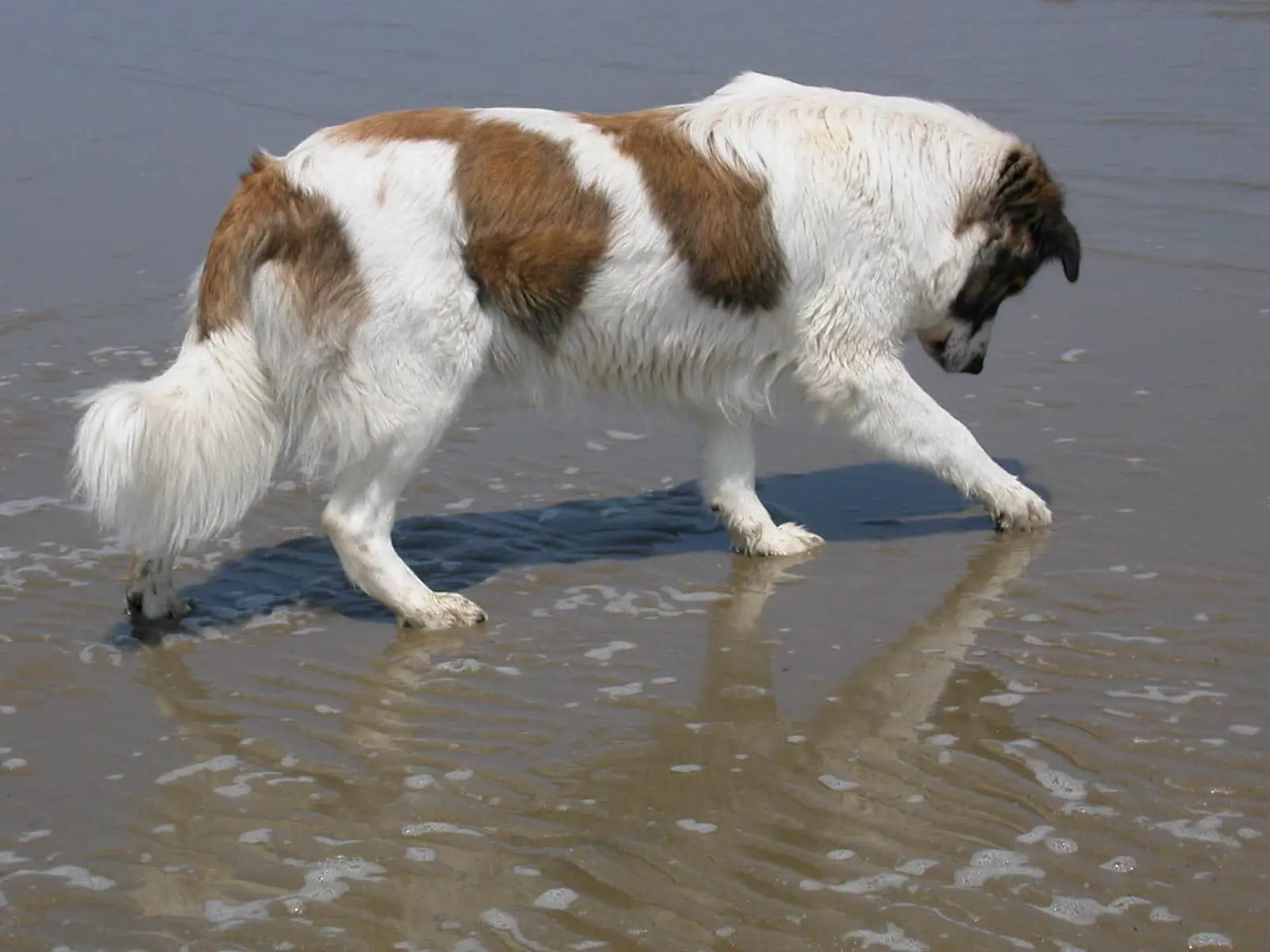
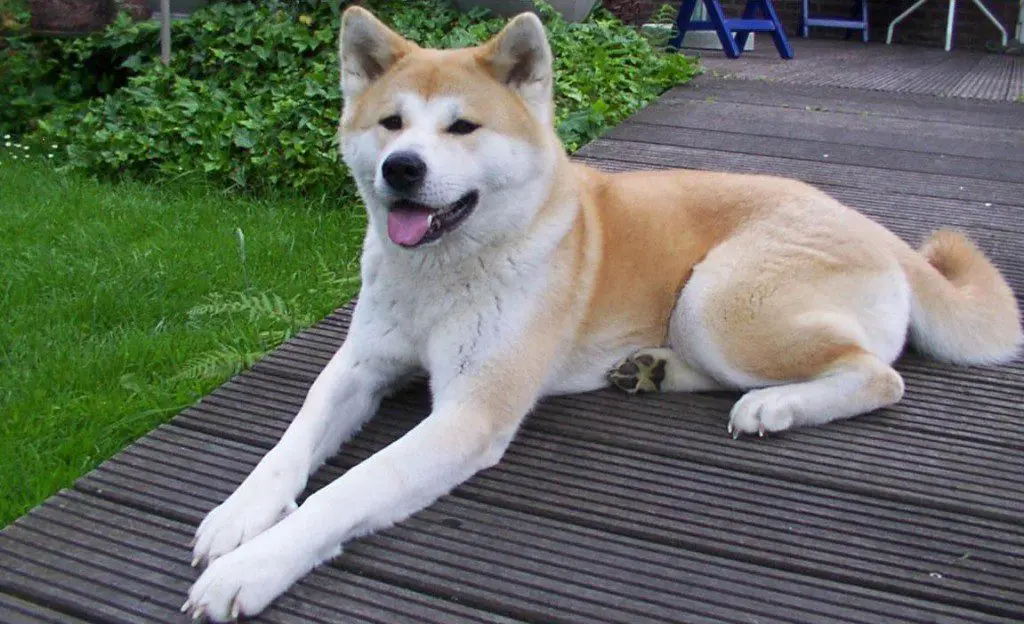
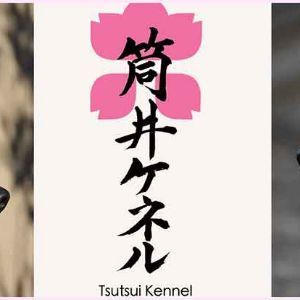
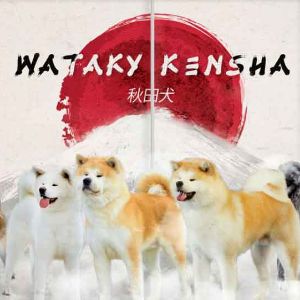
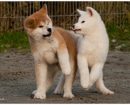
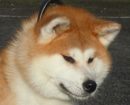

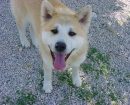
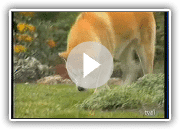 You Akita Video
You Akita Video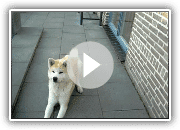 Obedience Kimi (Akita)
Obedience Kimi (Akita)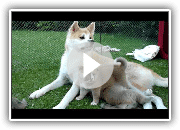 Akita inu Haguro Kensha
Akita inu Haguro Kensha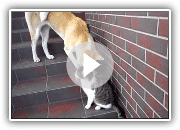 Akita Inu playing with cat
Akita Inu playing with cat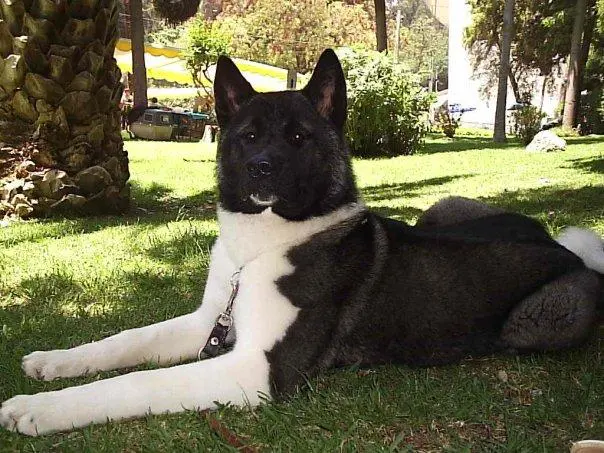
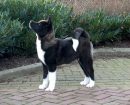
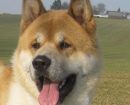
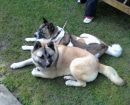
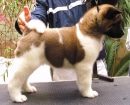
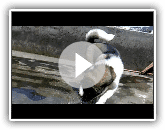 AKITA AMERICANO 6 MONTHS; ROMYNA
AKITA AMERICANO 6 MONTHS; ROMYNA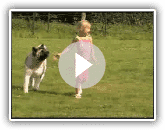 American Akita playing with Child AMERICAN TRIUMPH
American Akita playing with Child AMERICAN TRIUMPH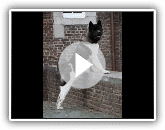 American Akita
American Akita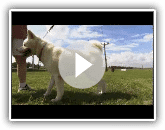 Dogs 101 – Akita Inu
Dogs 101 – Akita Inu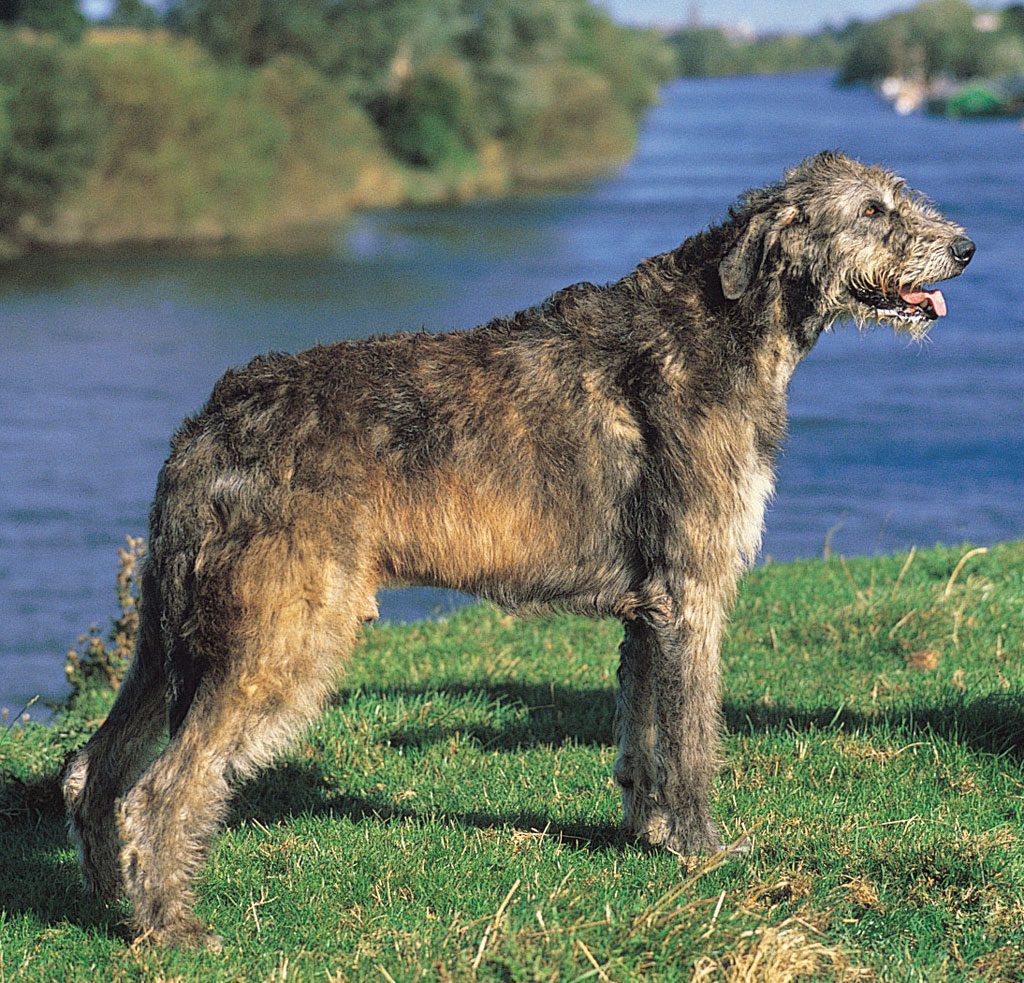





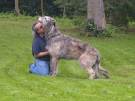
 Irish Lobero or Irish Wolfhound – homemania
Irish Lobero or Irish Wolfhound – homemania irish greyhound (Irish wolfhound) – Breed of dog
irish greyhound (Irish wolfhound) – Breed of dog EGON Lobero Irish s 6 meses Irish WolfHound
EGON Lobero Irish s 6 meses Irish WolfHound AKC Dog Breed Series – Irish Wolfhound
AKC Dog Breed Series – Irish Wolfhound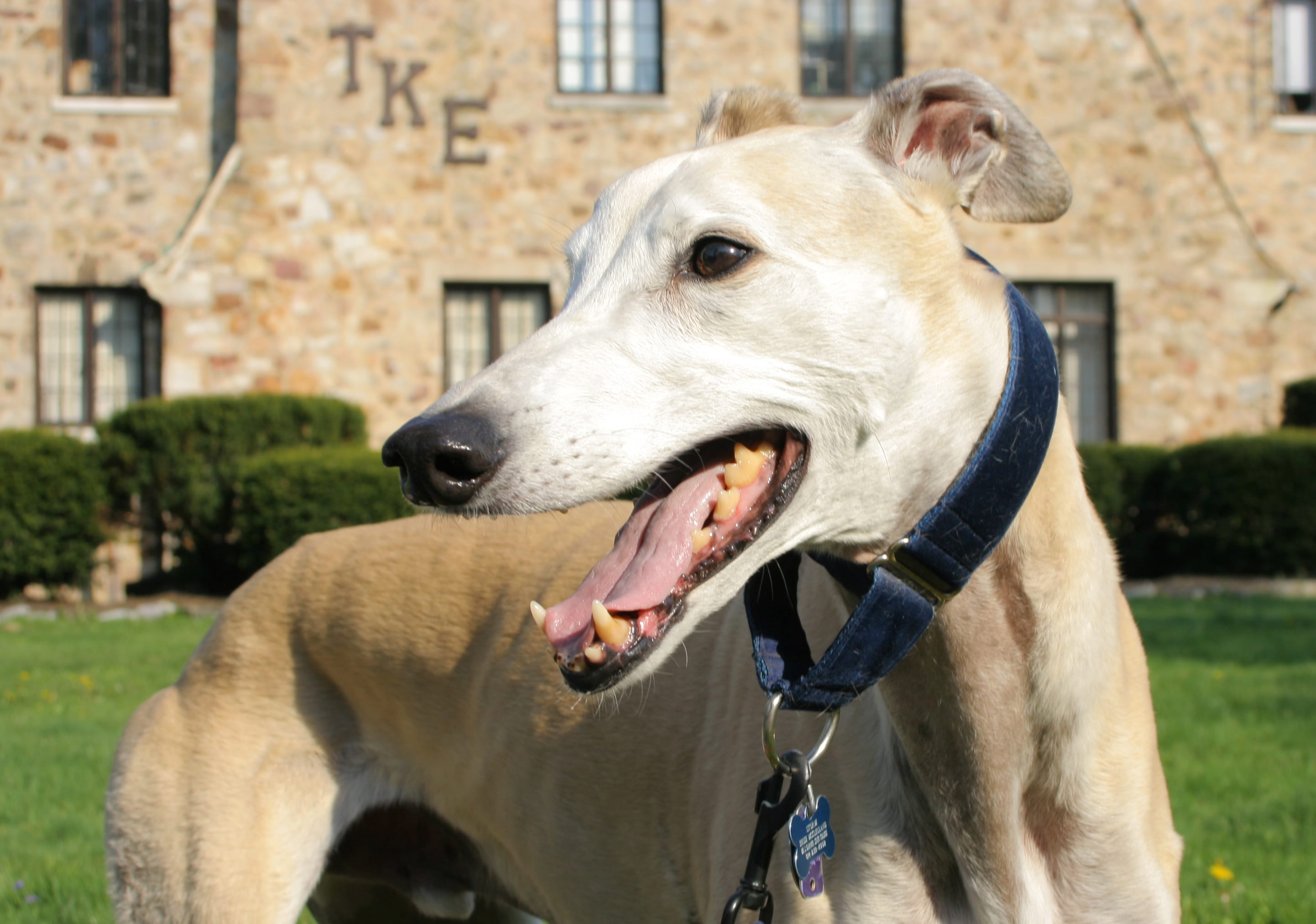






 British greyhound racing – Track race
British greyhound racing – Track race English Greyhound / Breed of dog
English Greyhound / Breed of dog Spanish Greyhound vs English Greyhound
Spanish Greyhound vs English Greyhound Dogs 101 – GREYHOUND – Top Dog Facts About the GREYHOUND
Dogs 101 – GREYHOUND – Top Dog Facts About the GREYHOUND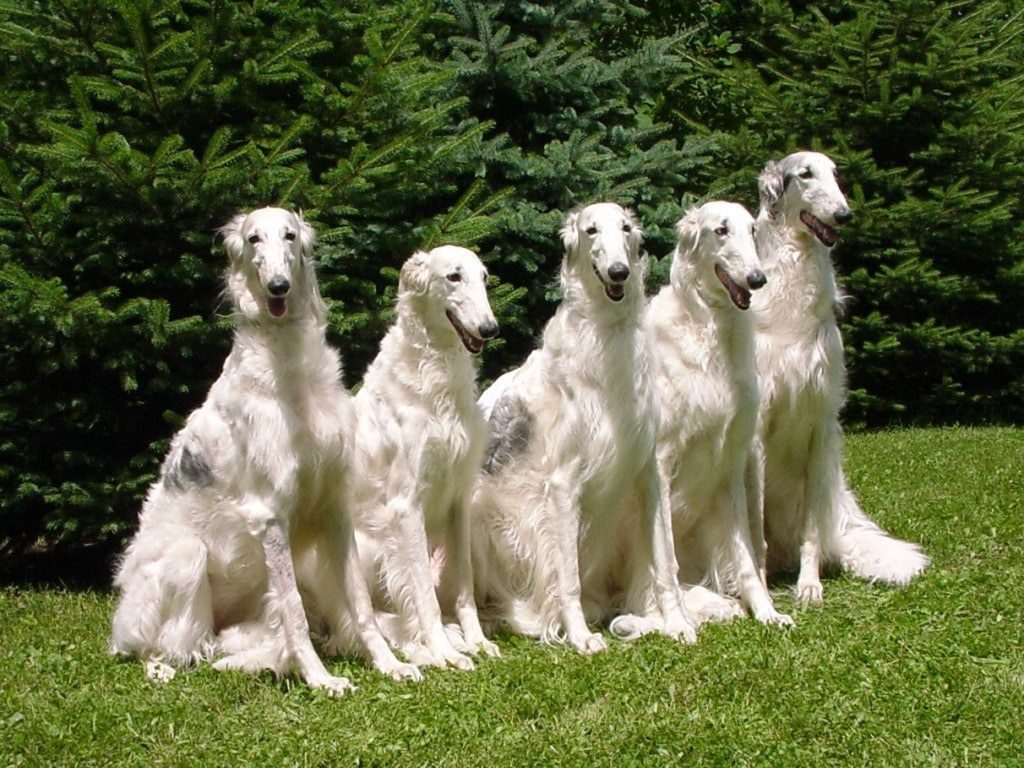



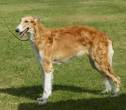
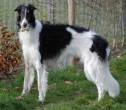

 Borzoi
Borzoi Borzoi – Russian Hunting Sighthound – AKC Dog breed series
Borzoi – Russian Hunting Sighthound – AKC Dog breed series Lucy the Borzoi wins the Hound Group | WESTMINSTER DOG SHOW (2018)| FOX SPORTS
Lucy the Borzoi wins the Hound Group | WESTMINSTER DOG SHOW (2018)| FOX SPORTS BORZOI: the RUSSIAN Greyhound dog | 5 Data and 10 Curiosities that you may not know
BORZOI: the RUSSIAN Greyhound dog | 5 Data and 10 Curiosities that you may not know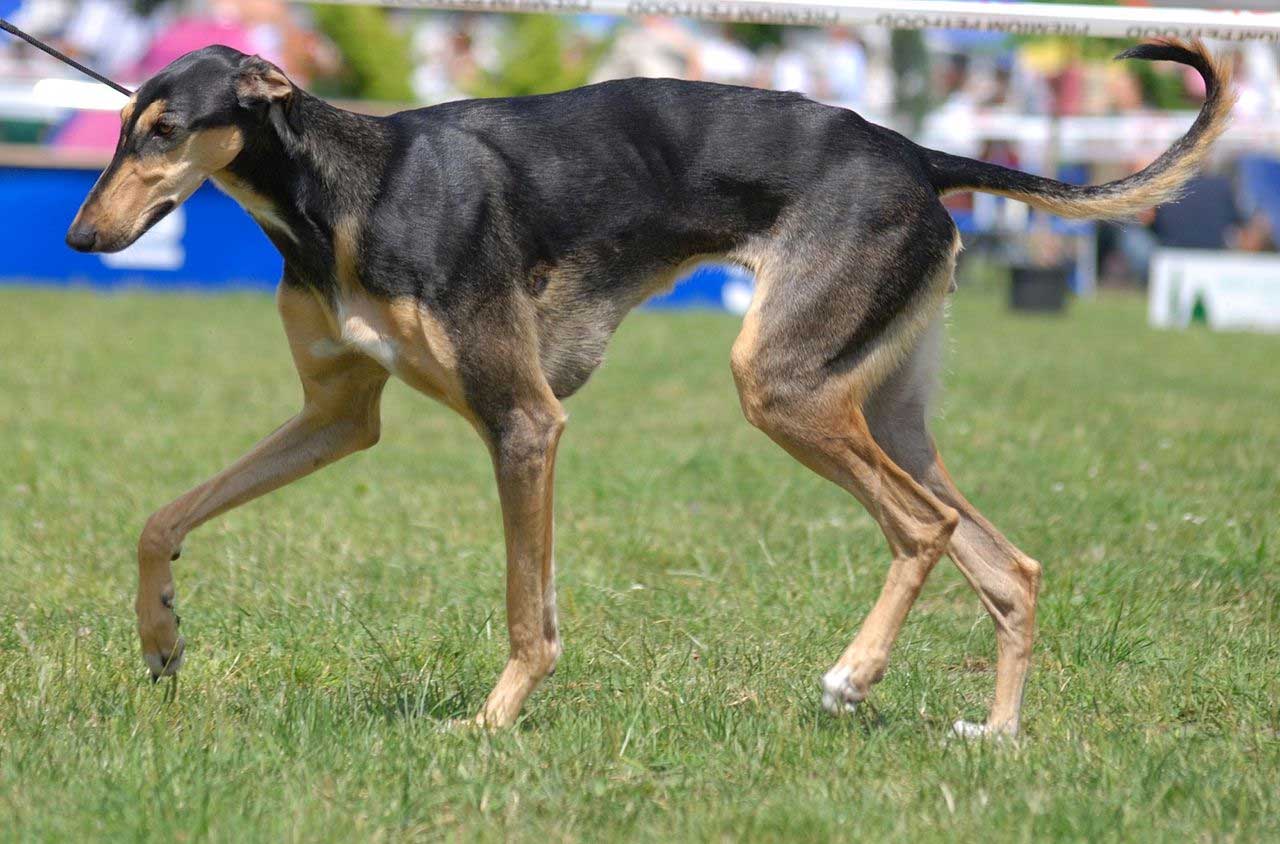
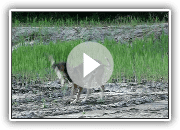
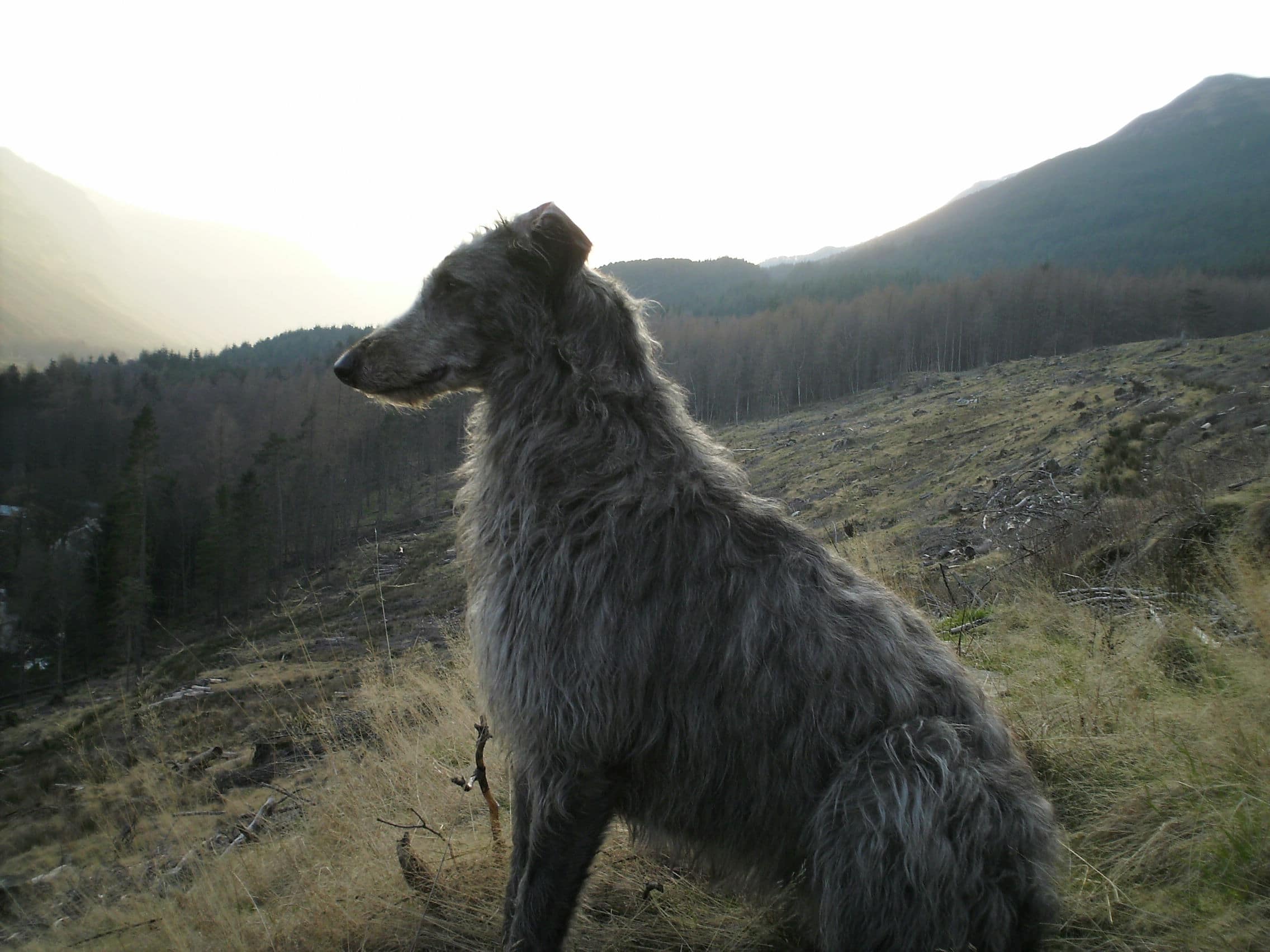






 Scottish Greyhound or Deerhound – Dog Breed
Scottish Greyhound or Deerhound – Dog Breed The Great Scottish Deerhound
The Great Scottish Deerhound Deerhound way of life at Antonius Vertragus
Deerhound way of life at Antonius Vertragus Deerhounds – Bests of Breed
Deerhounds – Bests of Breed